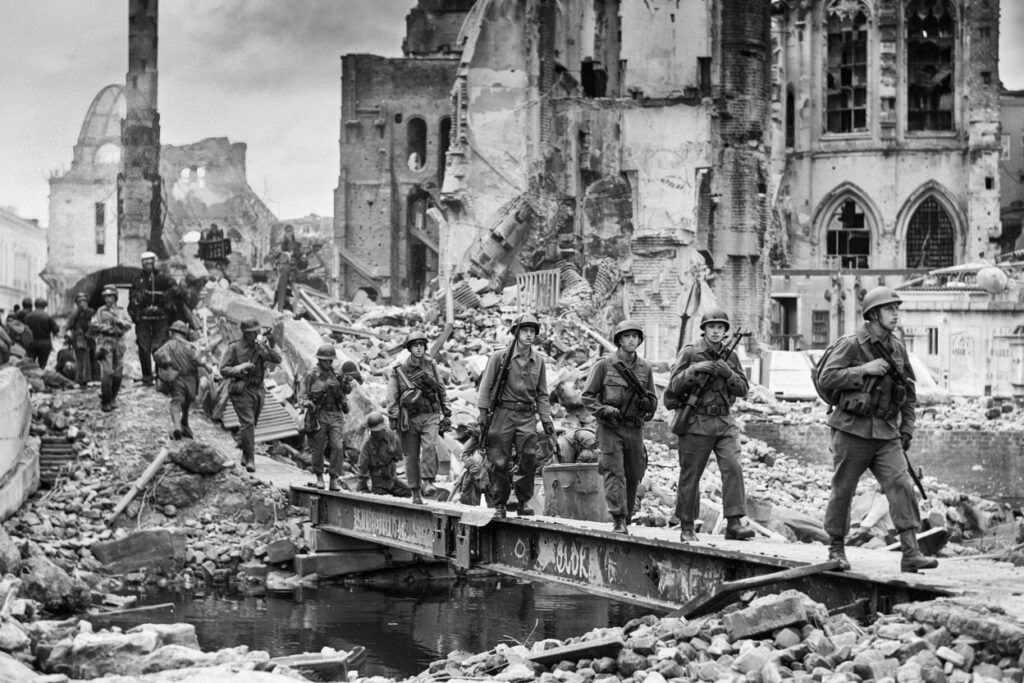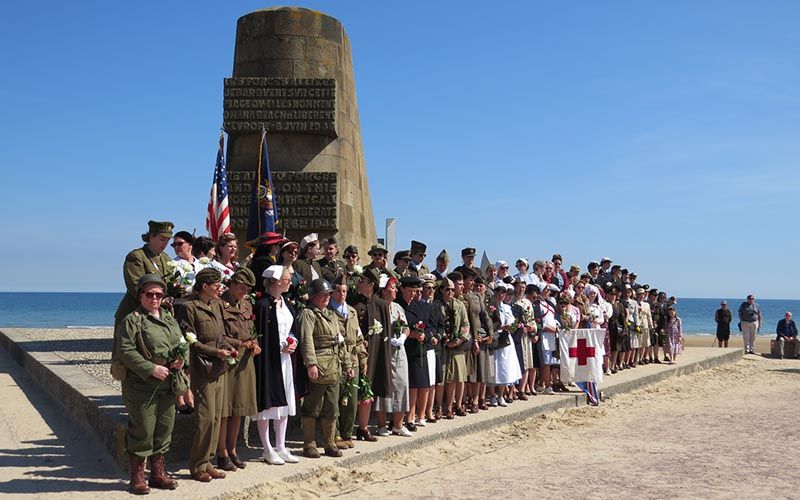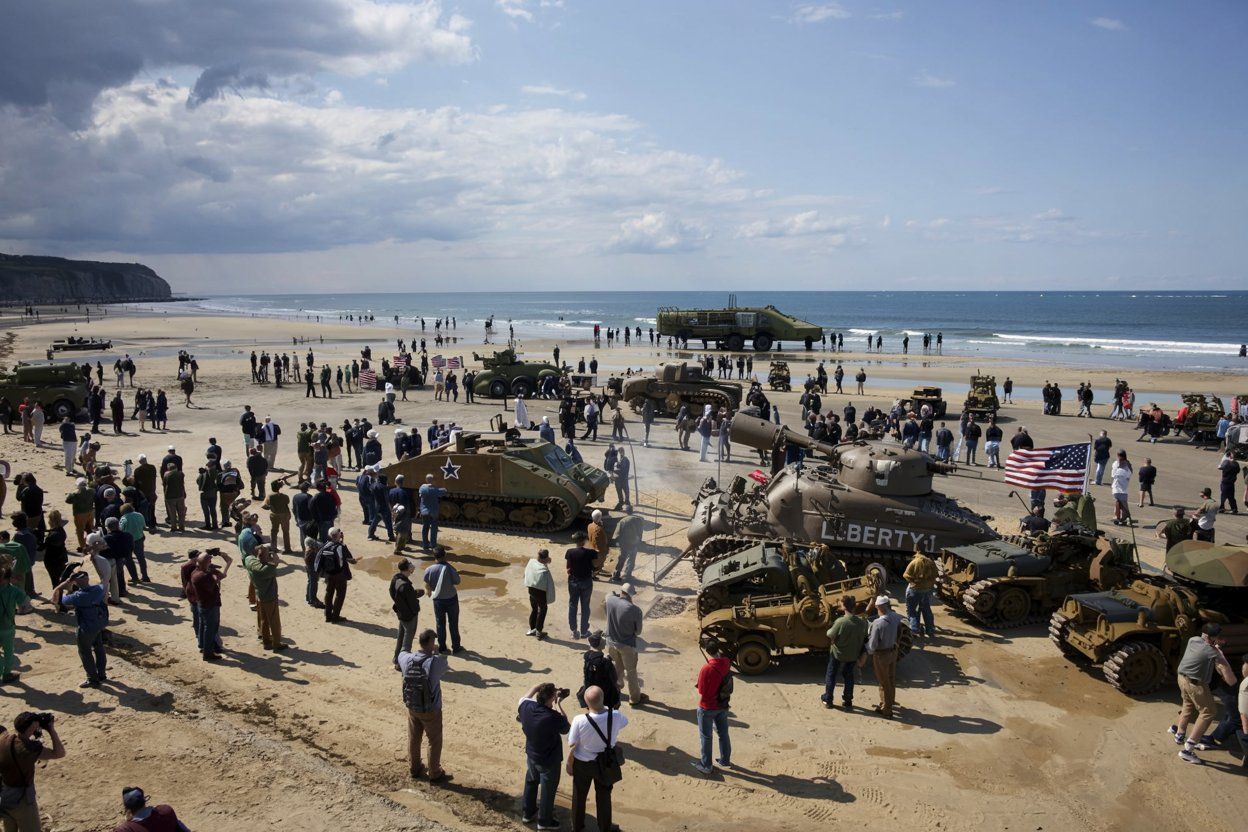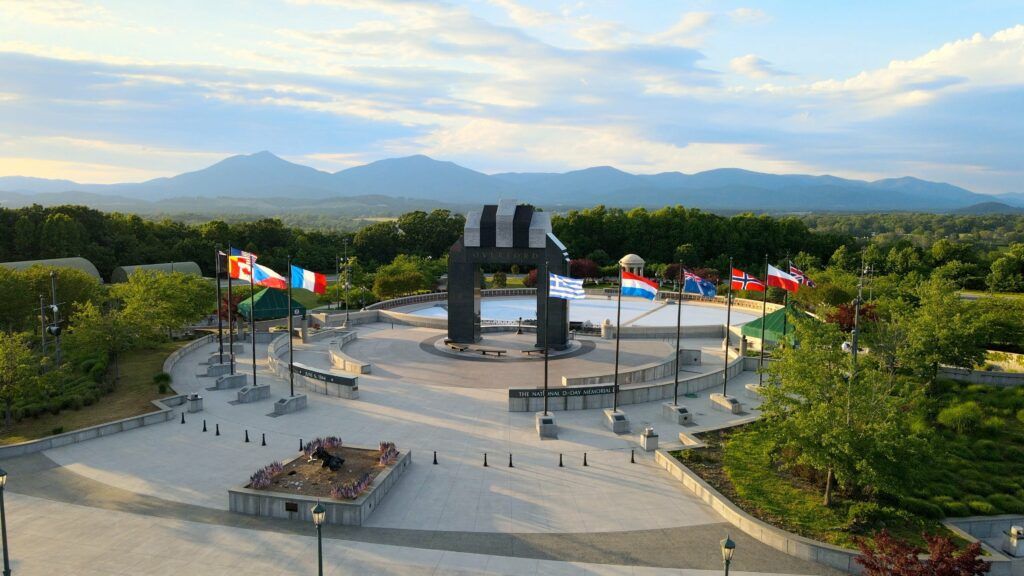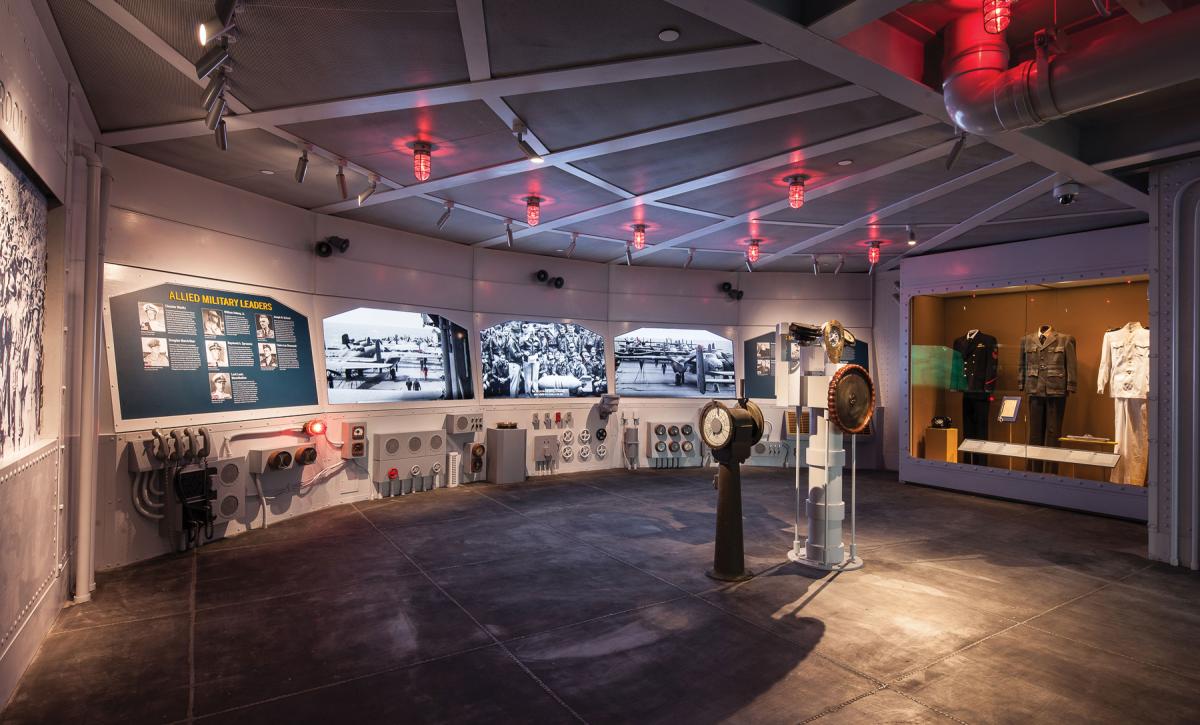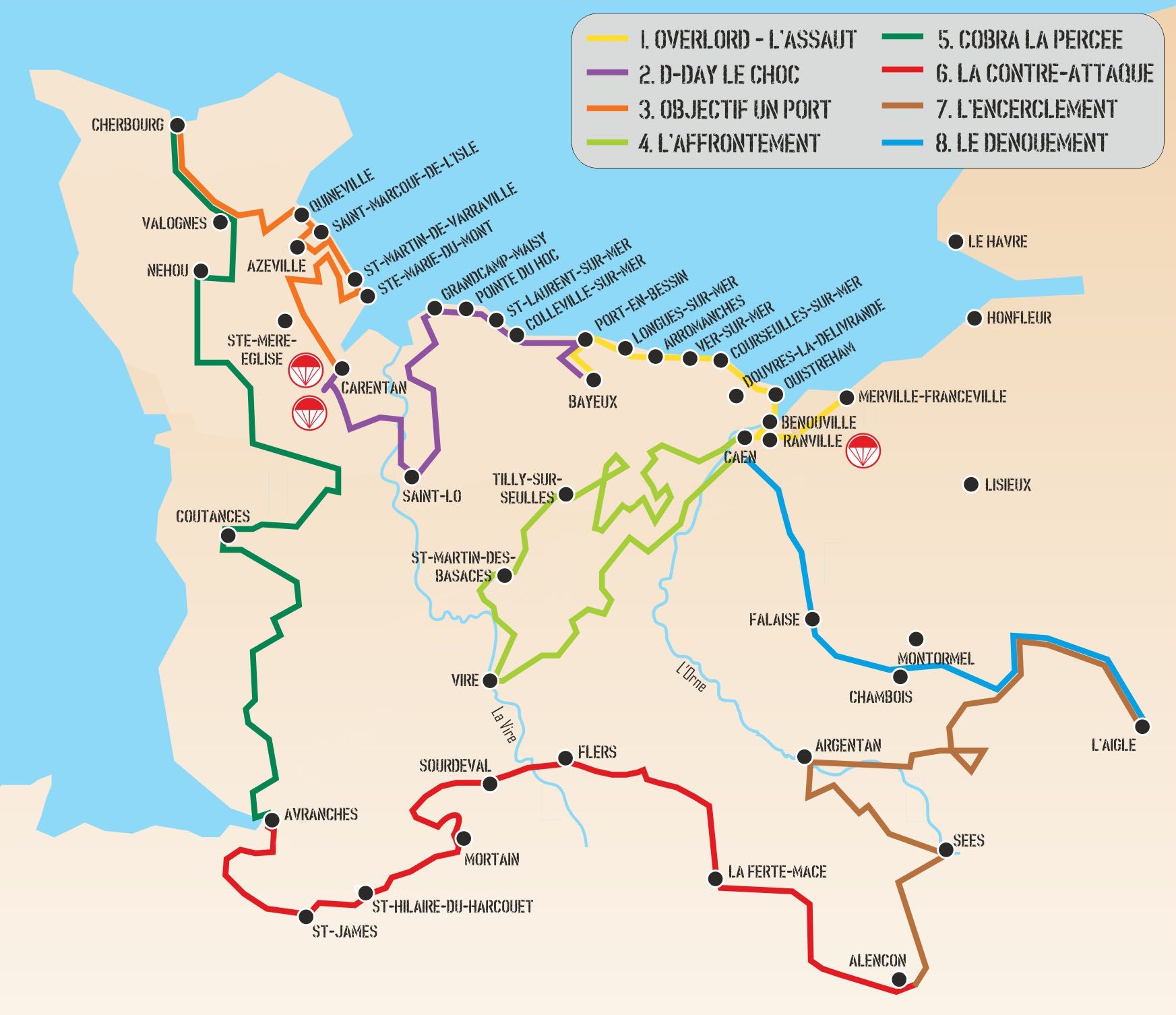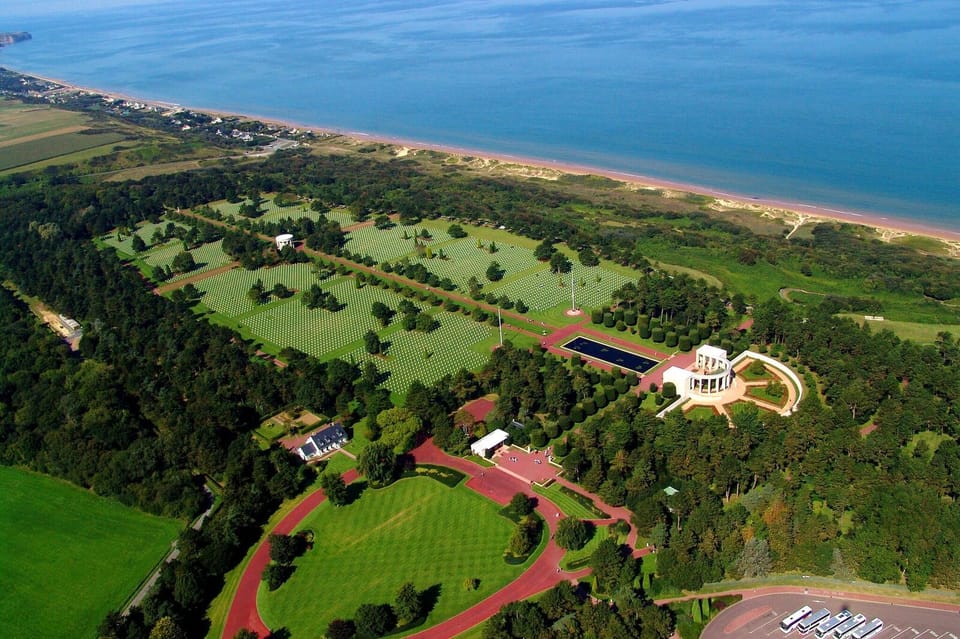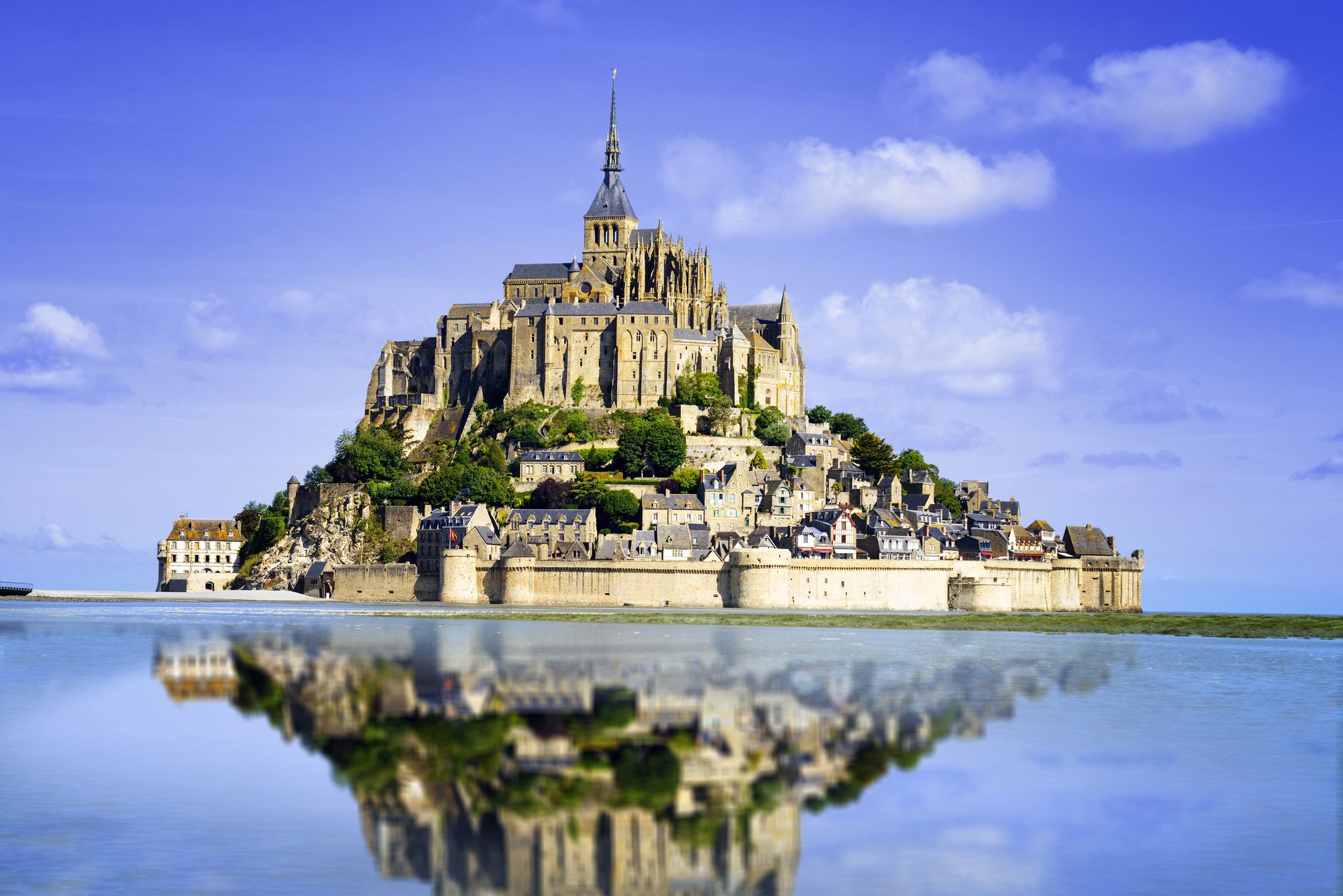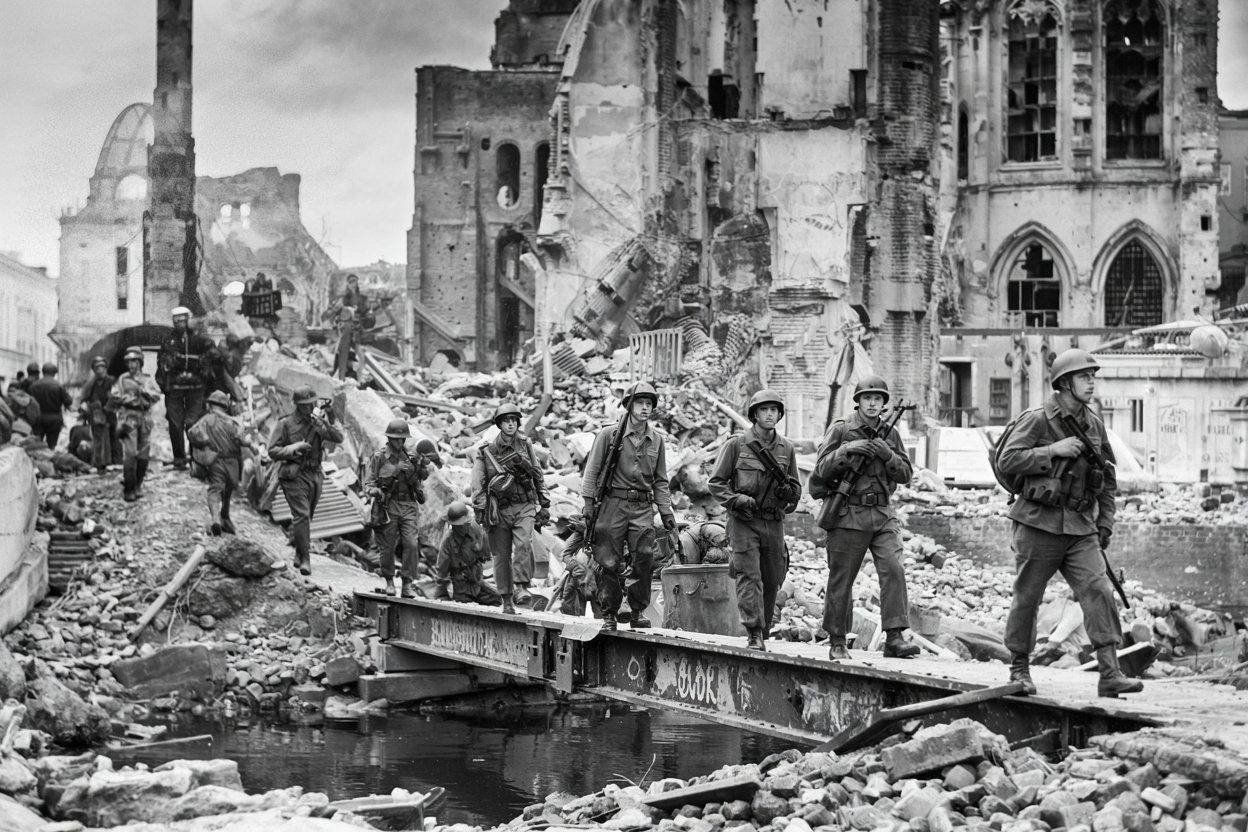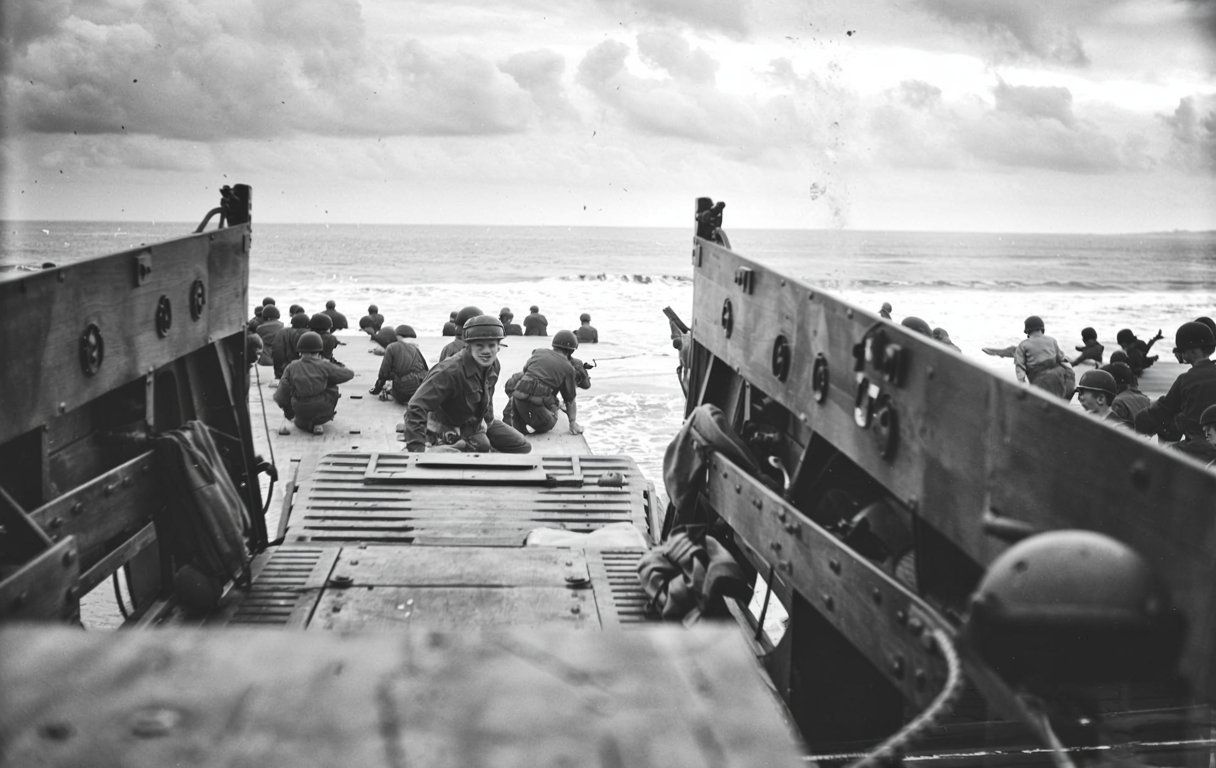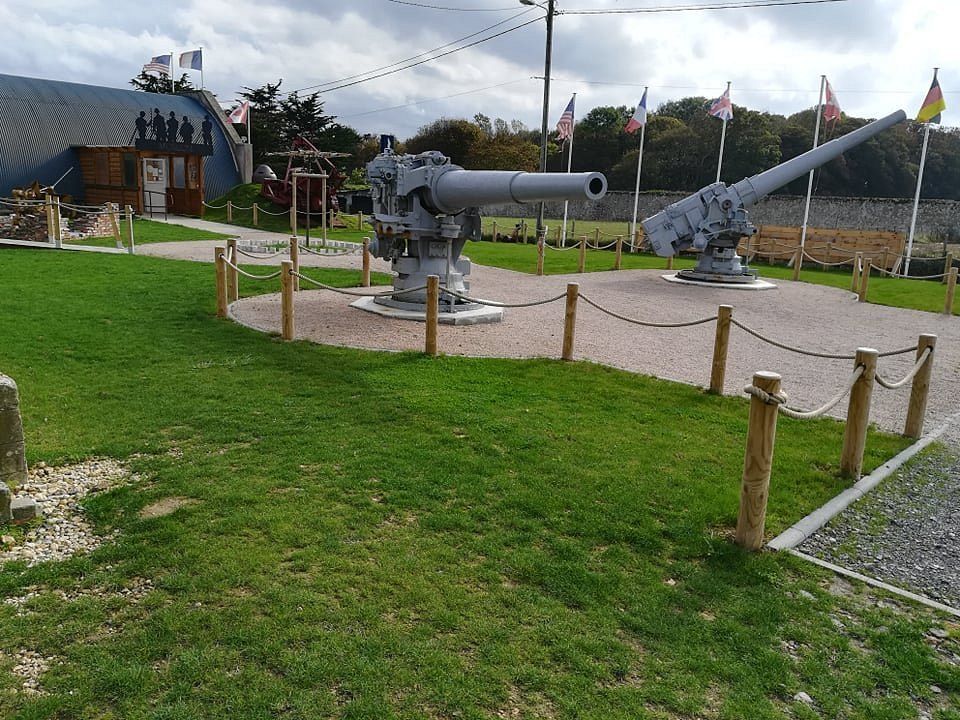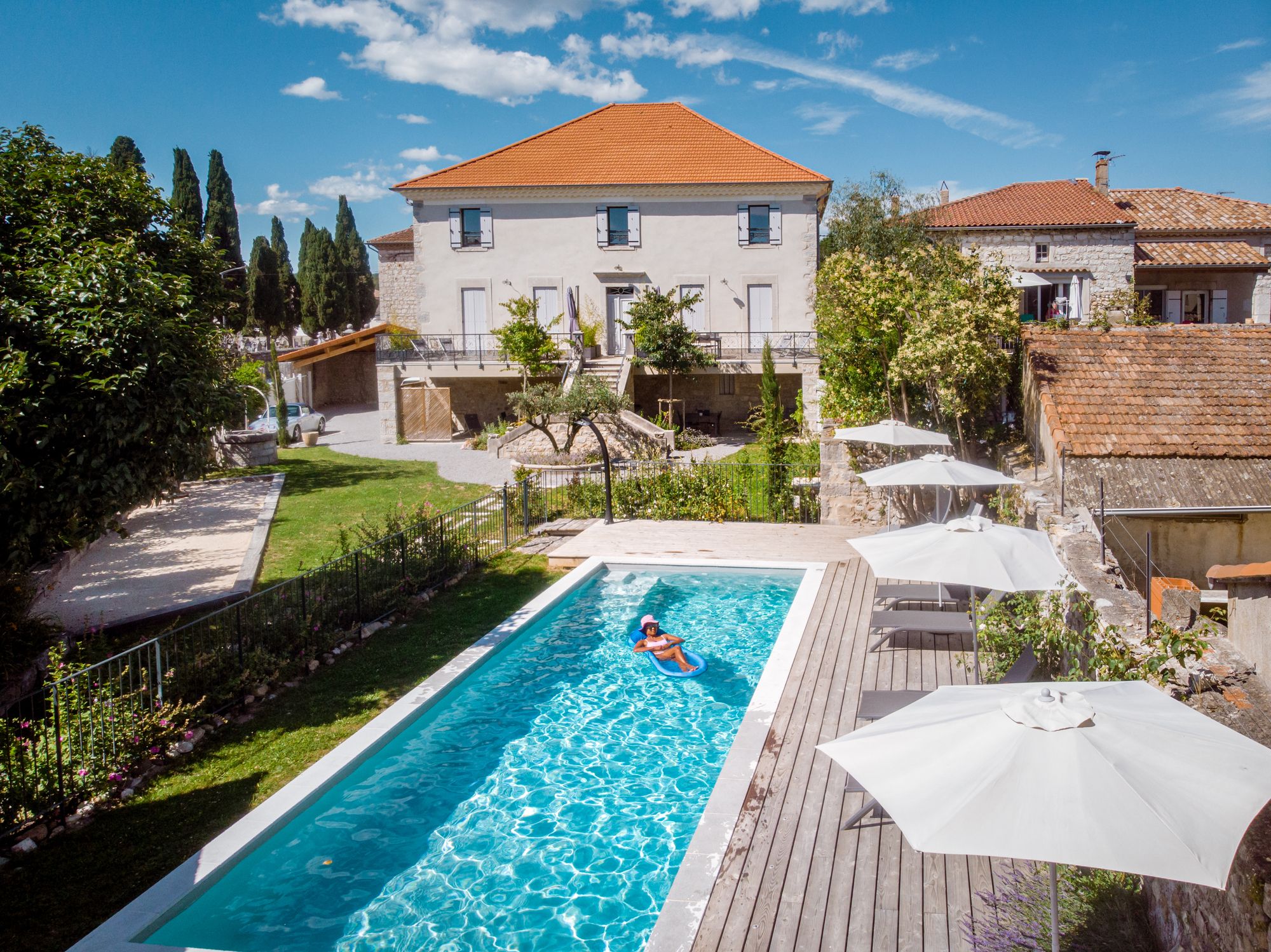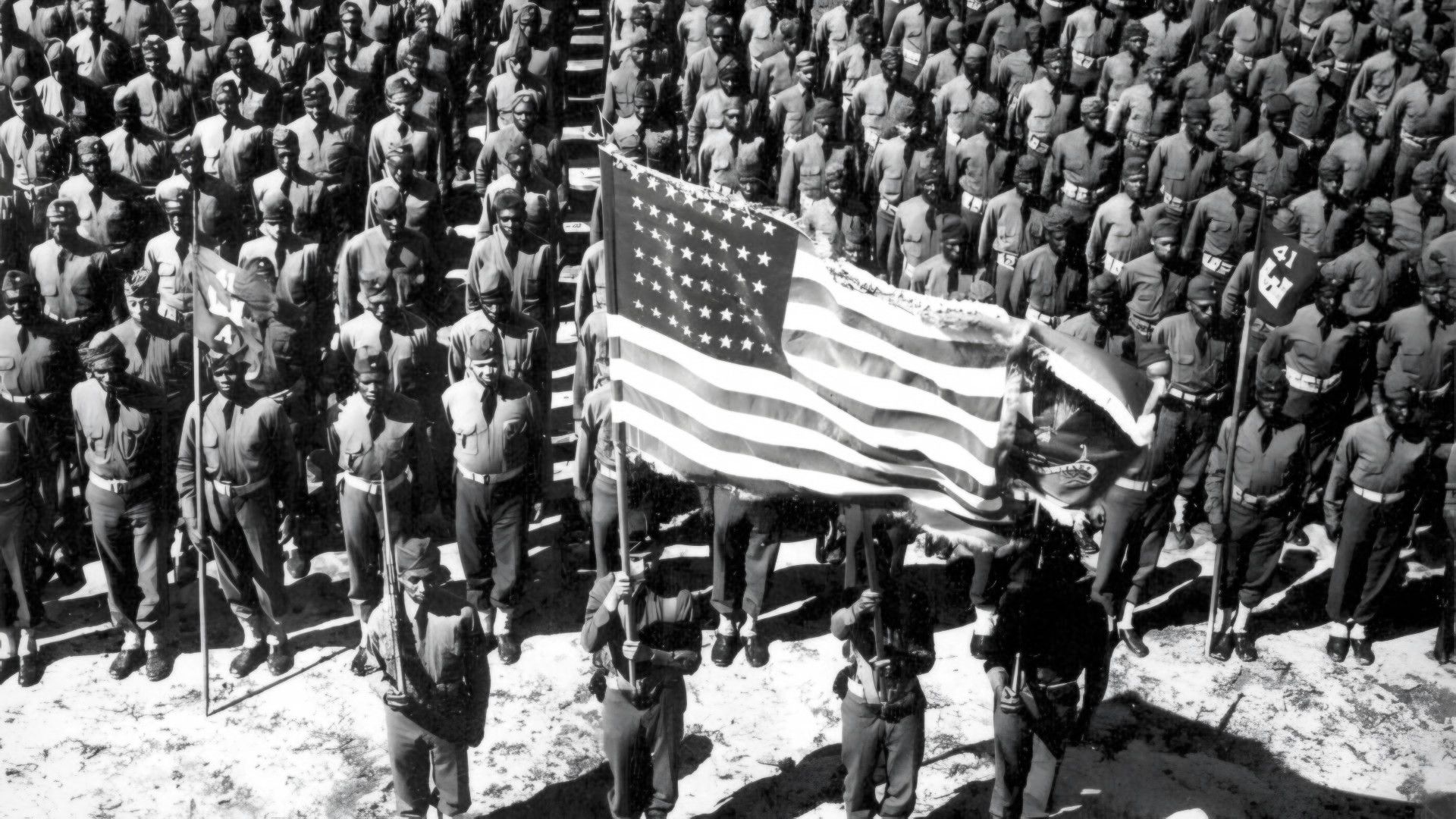The towns of Normandy stand as living memorials to one of history’s most pivotal military operations. On June 6, 1944, American soldiers stormed the beaches of Normandy, breaking through Hitler’s Atlantic Wall defenses and beginning the liberation of Western Europe. Bayeux holds the distinction of being the first city liberated after D-Day, making it an essential starting point for visitors exploring the historic sites along the Norman coast.
Today, these towns preserve the memory of that fateful day through museums, monuments, and carefully maintained landing beaches. Visitors can walk the same sands where Allied forces landed under heavy fire, their sacrifice marked by American flags and solemn memorials dotting the landscape. From the strategic harbor at Cherbourg to the hard-won streets of Caen and Saint-Lô, each location tells a part of the D-Day story.
The Normandy beaches—Omaha, Utah, Gold, Juno, and Sword—remain the centerpieces of any historical tour. Omaha Beach, in particular, represents ground zero for American D-Day history, where some of the most intense fighting occurred as soldiers faced the heavily fortified defenses. These quiet stretches of coastline now stand in stark contrast to the chaos and courage displayed there on that June morning over eight decades ago.
Bayeux
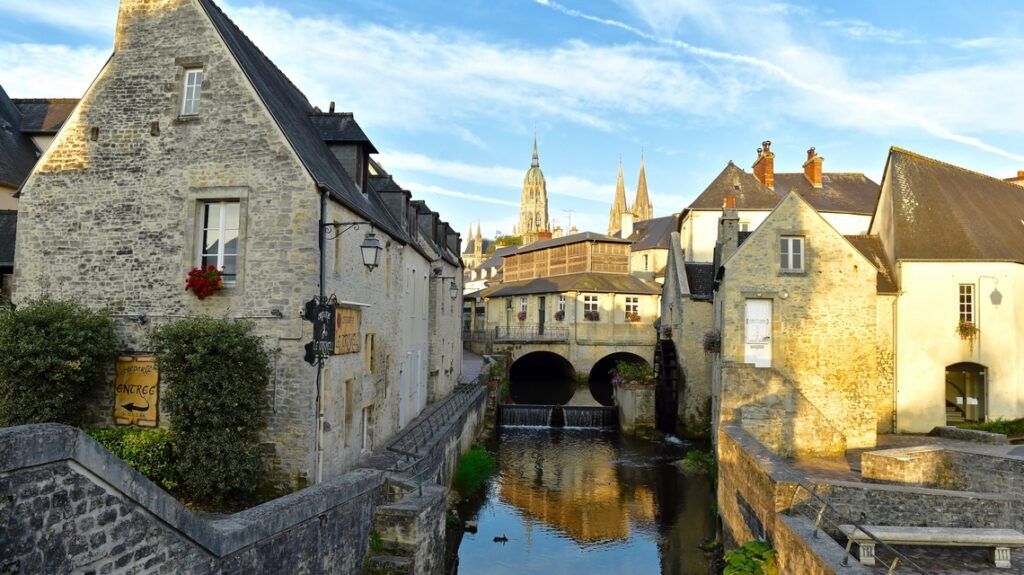
Bayeux holds the distinction of being the first French town liberated after the D-Day landings. British troops secured the town on June 7, 1944, just one day after the initial beach assaults began.
Unlike many coastal communities in Normandy, Bayeux escaped significant damage during the war. This preservation makes it an excellent starting point for visitors exploring D-Day sites today.
The town serves as home to the renowned Bayeux War Museum (Musée Mémorial de la Bataille de Normandie). This comprehensive museum displays military equipment, uniforms, and detailed exhibits chronicling the Normandy Campaign.
Bayeux’s medieval character remains intact with its cobblestone streets and impressive cathedral. The town center offers visitors a glimpse of pre-war France that many other Normandy communities lost in the fighting.
On June 14, 1944, General Charles de Gaulle visited the region, coming ashore at Juno Beach before making his way to liberated towns. His arrival symbolized the beginning of France’s return to freedom.
Today, Bayeux functions as an ideal base for D-Day tourism. Its central location provides easy access to all five landing beaches and major battle sites throughout the region.
The town also houses the famous Bayeux Tapestry, an 11th-century embroidered cloth depicting the Norman Conquest – a reminder that Normandy’s significant military history extends far beyond World War II.
Click here to read more about Bayeux.
Arromanches-les-Bains
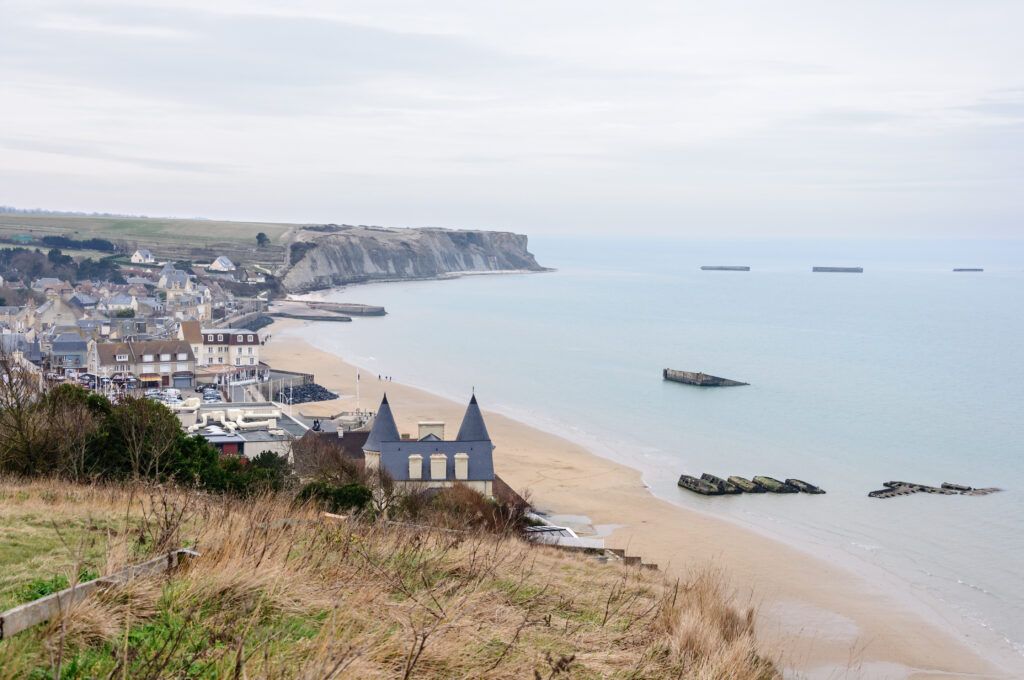
Arromanches-les-Bains is a small coastal village nestled between two cliffs in Normandy, France. It played a crucial role during the D-Day landings of June 1944.
The town is most famous for housing one of the Mulberry harbors—artificial ports constructed by the Allies to facilitate the rapid unloading of supplies and reinforcements. These engineering marvels were essential to the success of the Normandy invasion.
During Operation Overlord, the Allies deliberately avoided bombing Arromanches. They wanted to preserve the village for its strategic location, as destroying it would have hindered their plans for the artificial harbor.
Arromanches was situated near Gold Beach, where British forces landed. The town’s position between the American sectors (Utah and Omaha beaches) to the west and other British and Canadian landing zones (Juno and Sword beaches) to the east made it strategically important.
Today, visitors to Arromanches can still see remnants of the Mulberry harbor in the bay. These massive concrete structures stand as silent witnesses to the engineering feat that helped secure the Allied foothold in Europe.
The town has transformed from a military logistics hub to a popular beach resort while maintaining its historical significance. Museums and memorials throughout Arromanches help preserve the memory of what happened here in 1944.
For those touring D-Day sites in Normandy, Arromanches is considered one of the must-visit locations, offering both historical significance and scenic coastal beauty.
Click here to read more about Arromanches-les-Bains.
Sainte-Mère-Église
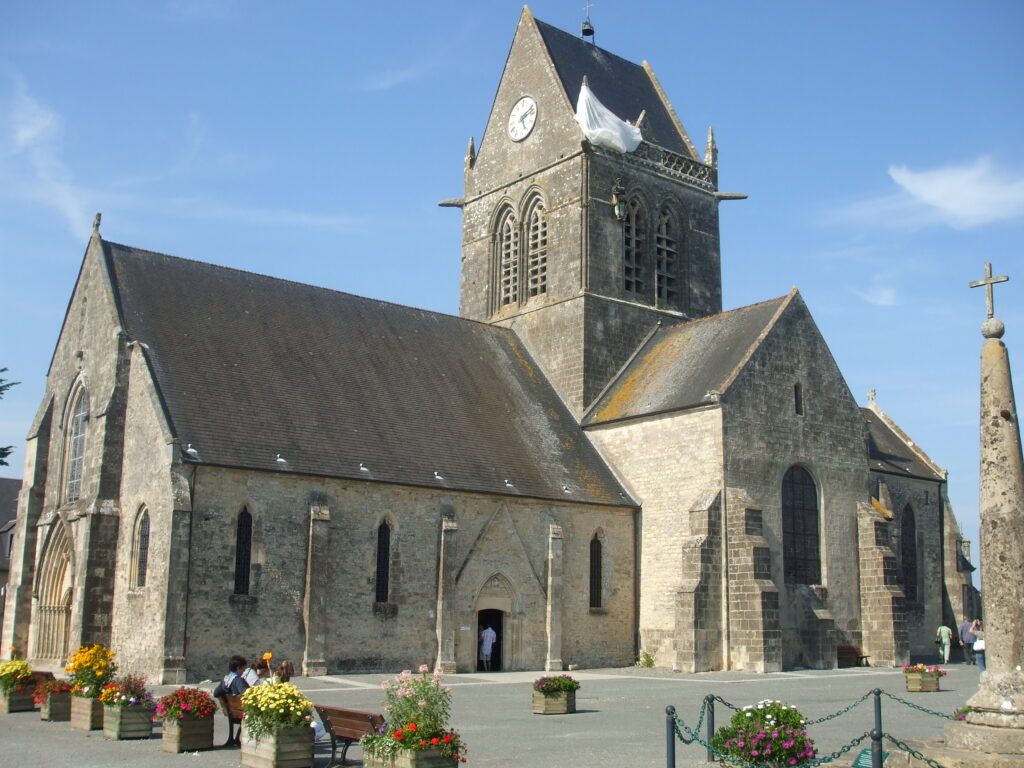
Sainte-Mère-Église is a small commune located in the Manche department of Normandy, France. This quiet rural town gained historical significance as the first French town liberated on D-Day during World War II.
The town’s strategic importance stemmed from its location at the crossroads of all communications leading to Cherbourg. This made it a crucial objective for Allied forces during the Normandy invasion.
In the early hours of June 6, 1944, American paratroopers from the 82nd and 101st Airborne Divisions descended on and around Sainte-Mère-Église. Their mission was to secure the town before the main beach landings began.
One famous incident involved American paratrooper John Steele, whose parachute caught on the church steeple. He hung there for hours, pretending to be dead, while battle raged below. Today, a parachute mannequin hangs from the church in tribute to this event.
The town quickly became a somber site where fallen American soldiers were first buried—13,800 in total across three cemeteries.
Sainte-Mère-Église now serves as an important memorial to D-Day operations. The Airborne Museum in the town square details the airborne operations and preserves artifacts from the invasion.
Each year on June 6th, the town square fills with veterans, visitors, and locals to commemorate the liberation. The celebrations honor those who fought and died to free the first town in France from Nazi occupation.
Click here to read more about Sainte-Mère-Église.
Caen
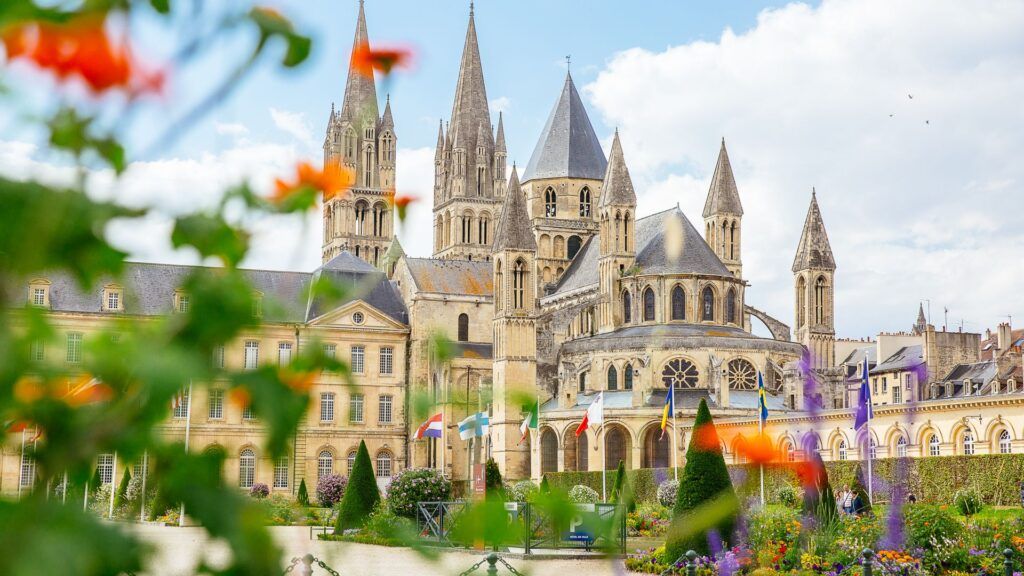
Caen is a significant city in Normandy with deep historical ties to World War II. Located in the British Sword Beach sector, it was a key strategic objective during the D-Day invasion.
The city was liberated on July 9, 1944, over a month after the initial D-Day landings. This delay highlights the fierce resistance encountered by Allied forces as they pushed inland from the beaches.
Before the war, Caen was known for its historical buildings constructed during the reign of William the Conqueror, who was buried there. Many of these structures suffered extensive damage during the battle for the city.
The Caen Memorial and Museum stands as a testament to the city’s important role in the war. Opening on D-Day in 1988, it is widely considered one of the finest World War II museums in the region.
The museum serves as both a memorial to the fallen and an educational center about the war and its impact on Normandy. Its comprehensive exhibits draw visitors from around the world.
Caen’s strategic importance during the Normandy campaign cannot be overstated. Its road network and position made it a crucial objective for Allied forces pushing inland from the beaches.
Today, Caen balances its wartime history with its medieval heritage, offering visitors a chance to explore both aspects of its rich past.
Click here to read more about Caen.
Saint-Lô
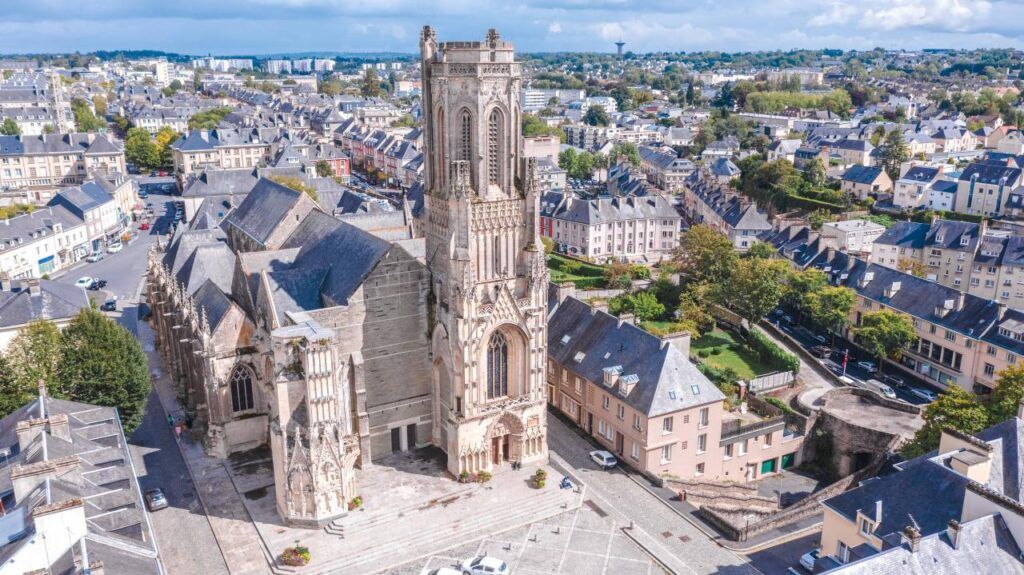
Saint-Lô, the capital of Manche département in Normandy, sits on a promontory overlooking the Vire River valley. Known today as “France’s horse capital,” this town played a crucial role during the Normandy campaign of 1944.
Beginning on D-Day (June 6, 1944), Saint-Lô faced intense Allied bombing. For an entire week, air raids targeted strategic locations including the railway station and power station.
The town became a key objective for American forces, particularly the US 29th Infantry Division that had landed on the western part of Omaha Beach. These troops fought their way inland toward Saint-Lô in what would become a grueling battle.
By late July 1944, the fighting around Saint-Lô proved pivotal. American forces successfully pushed through the area, eventually seizing Avranches. This strategic victory enabled General Patton’s forces to break through German defenses and advance southward.
The price of liberation was devastating for Saint-Lô itself. The town was almost completely destroyed during the fighting, earning it the somber nickname “Capital of Ruins.”
Following World War II, Saint-Lô underwent comprehensive reconstruction. Today’s visitors see a rebuilt city that honors its difficult past while embracing its cultural heritage, particularly its strong equestrian traditions.
Click here to read more about Saint-Lô.
Colleville-sur-Mer
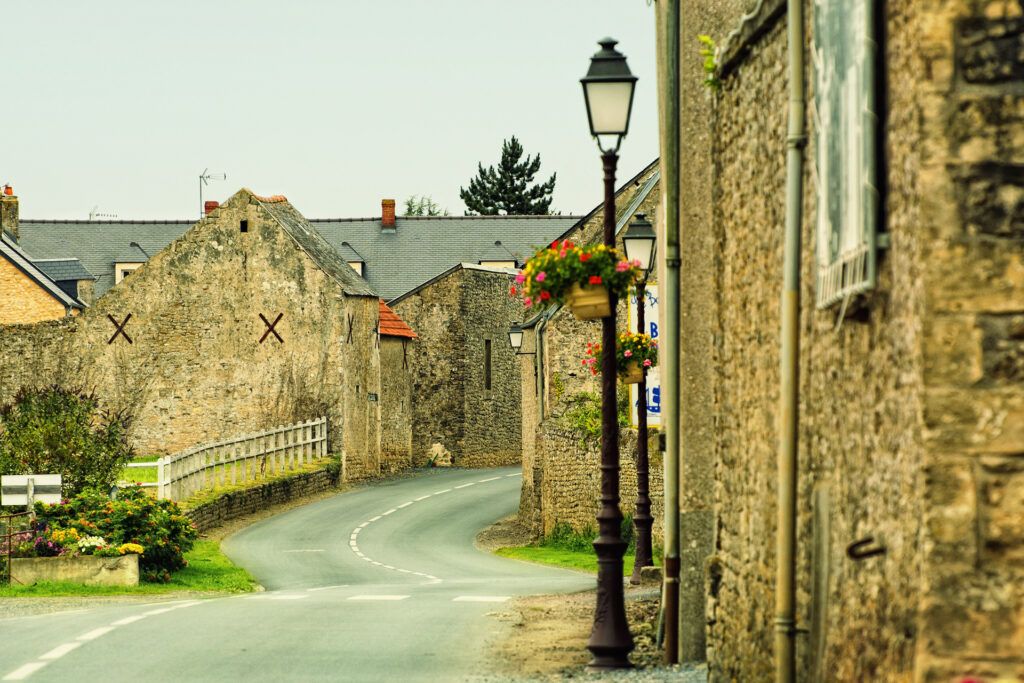
Colleville-sur-Mer is a small coastal village in Normandy that gained historical significance during World War II. The village and its beach were heavily defended by German forces in 1944, with four strongpoints known as “Wiederstandnest” positioned along the coastline.
On June 6, 1944, this quiet village became the site of one of the most brutal D-Day landings, as American forces stormed what became known as Omaha Beach. The intense fighting here resulted in heavy casualties among Allied troops.
Today, Colleville-sur-Mer is home to the Normandy American Cemetery and Memorial, where more than 10,000 American soldiers rest. This solemn site overlooks the very beach where many of these soldiers fought and died.
The village also features historic landmarks like the Notre-Dame de l’Assomption de Colleville church, dating back to the 12th or 13th century, providing a stark contrast to the more recent war memorials.
Visitors to Colleville-sur-Mer can explore several important sites:
- Normandy American Cemetery and Memorial
- German bunkers along Omaha Beach
- Overlord Museum with D-Day artifacts
- Historic village center
The beach itself remains a powerful reminder of the events of June 1944, with remnants of German defensive positions still visible along the shoreline.
Colleville-sur-Mer serves as a crucial stop for those touring the 70km stretch of D-Day landing beaches from Sainte-Marie-du-Mont to Ouistreham.
Click here to read more about Colleville-sur-Mer.
Vierville-sur-Mer
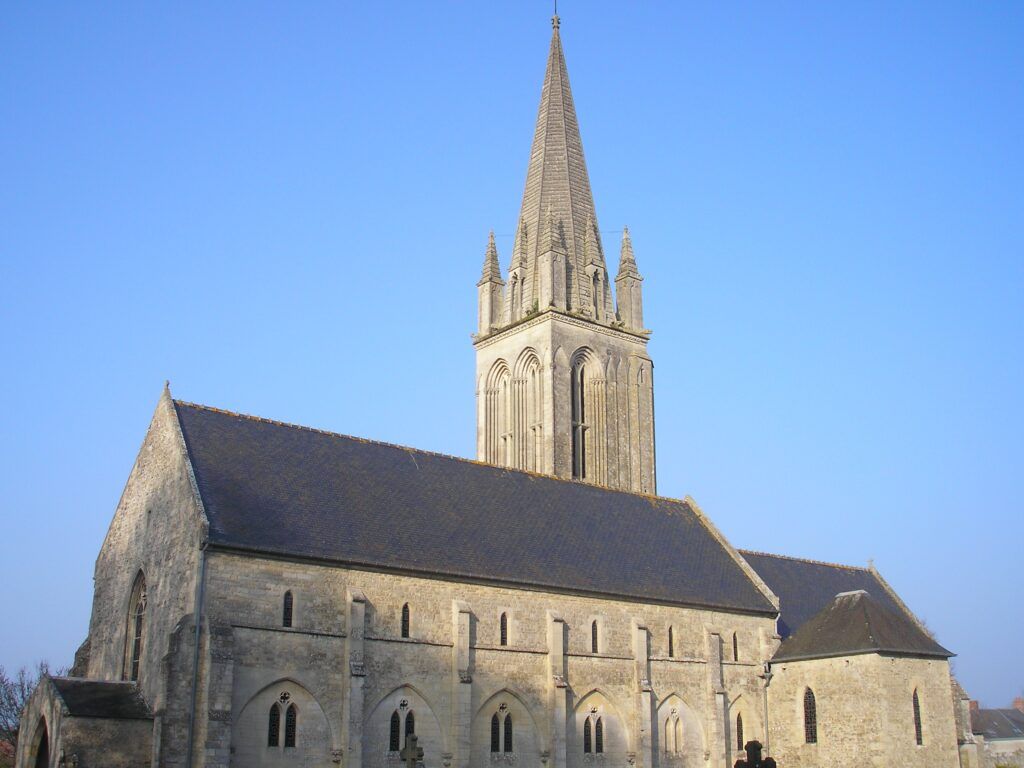
Vierville-sur-Mer is a small coastal commune located in the Calvados department of Normandy, northwestern France. This quiet village became a pivotal location during the D-Day landings of June 6, 1944.
The village sits approximately 20 kilometers from Bayeux, home of the famous Bayeux Tapestry. Before the war, it was a peaceful seaside community.
On D-Day, Vierville-sur-Mer was one of the primary assault points along Omaha Beach. The village was defended by four German strongpoints, coded from Wn 70 to Wn 73. These fortifications were part of Hitler’s Atlantic Wall defenses.
Local residents were awakened around 3 AM by the sound of Allied bombing. The villagers found themselves unwittingly at the center of one of history’s most significant military operations.
A notable geographical feature of Vierville-sur-Mer is its valley, which provided a natural route from the beach through the coastal cliffs. This valley became a crucial access point for Allied forces moving inland from Omaha Beach.
Today, Vierville-sur-Mer stands as an important historic site for visitors exploring D-Day landmarks. The beach section at Vierville was designated as “Dog Green” sector during the invasion, immortalized in the opening scenes of the film “Saving Private Ryan.”
Visitors to Vierville-sur-Mer can witness remaining bunkers and memorials that commemorate the bravery displayed on these shores. The village continues to honor the memory of those who fought for liberation.
Click here to read more about Vierville-sur-Mer.
Longues-sur-Mer
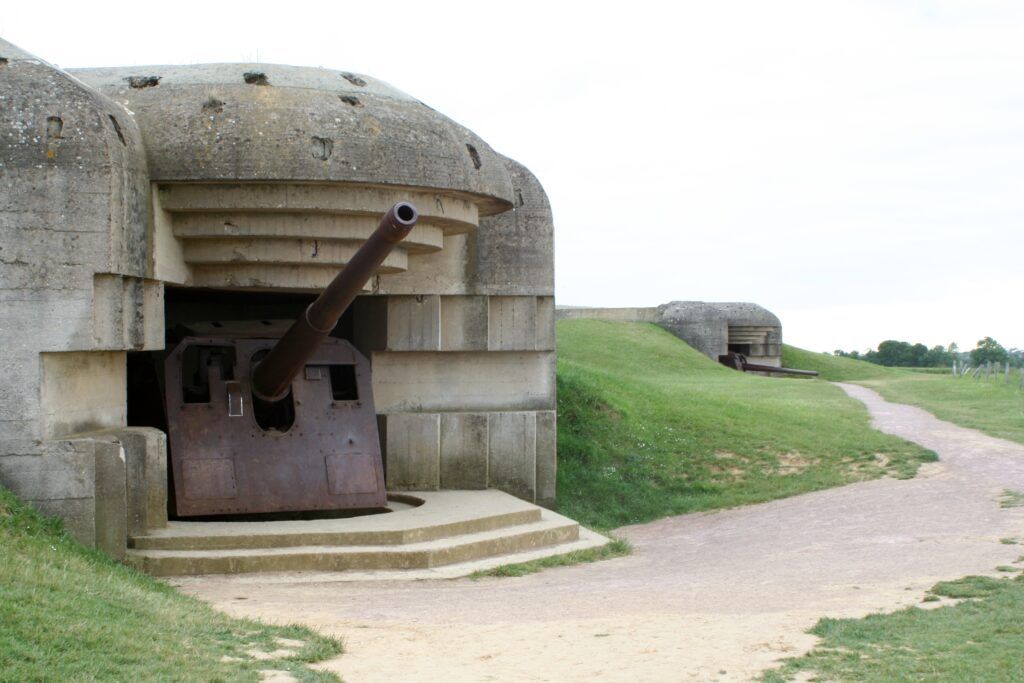
Longues-sur-Mer played a significant role during the D-Day operations in 1944. The Germans built an artillery battery on the plateau overlooking the cliffs near this small Norman village.
The battery consisted of four Regelbau M272 casemates with M262A command posts. These fortifications were strategically positioned between Omaha and Gold beaches, making them a critical target for Allied forces.
Today, Longues-sur-Mer Battery is one of the best-preserved D-Day sites in Normandy. Visitors can explore the intact bunkers and see the original German guns still in place, providing a vivid glimpse into the Atlantic Wall defenses.
Unlike nearby Pointe-du-Hoc with its dramatically cratered landscape, Longues-sur-Mer offers visitors a different perspective on the coastal defenses. The battery’s commanding position shows why the Germans selected this location for artillery placement.
The area was liberated shortly after the initial landings. While larger cities like Caen had to wait until July 9 and Saint-Lô until July 18, coastal positions like Longues-sur-Mer were secured earlier in the campaign.
Click here to read more about Longues-sur-Mer.
Cherbourg
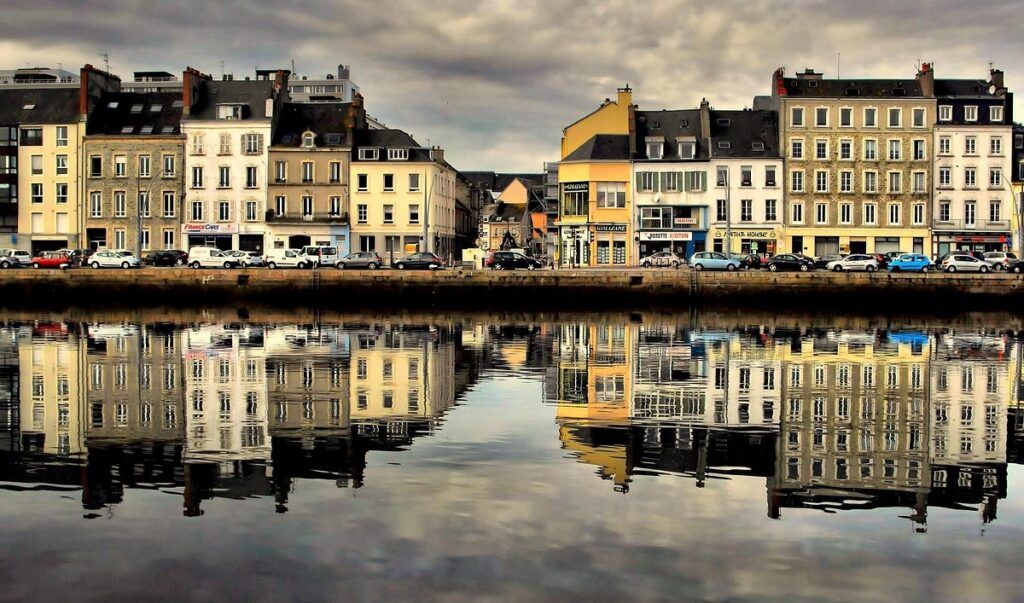
Cherbourg was a strategic port city during the D-Day campaign. After the initial landings on June 6, 1944, Allied forces recognized the importance of capturing this deepwater harbor to support their advancing troops.
The battle for Cherbourg was challenging. German forces had heavily fortified the city under direct orders from Adolf Hitler. They prepared extensive defenses and were determined to hold this crucial supply point.
American troops fought their way to Cherbourg in the weeks following D-Day. The city’s liberation came on June 26, 1944, making it one of the earlier major objectives secured during the Normandy campaign.
Before retreating, German forces implemented a scorched earth policy. They demolished port facilities, destroyed infrastructure, and left numerous booby traps throughout the city. This deliberate sabotage severely hampered Allied use of the harbor.
The port itself was left in ruins. Military engineers worked tirelessly to clear the harbor of obstacles and rebuild essential facilities. Despite the extensive damage, they managed to restore partial operations relatively quickly.
Cherbourg’s capture represented a significant victory for Allied forces. The functioning harbor eventually provided a vital supply line that helped sustain the push across France.
Today, visitors to Cherbourg can explore several museums and historic sites that commemorate this important chapter in the liberation of France. The city stands as a testament to both strategic military planning and the destructive nature of war.
Click here to read more about Cherbourg.
Ouistreham
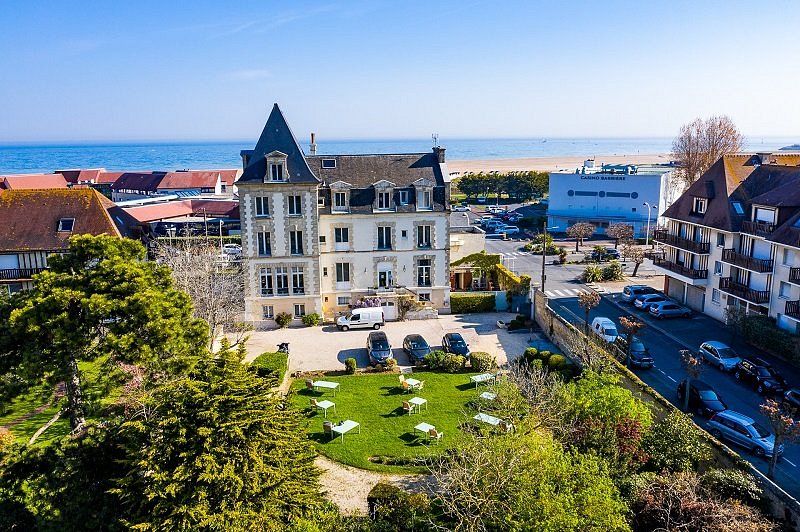
Ouistreham is a significant coastal town in Normandy, located at the mouth of the Orne River, about 9 miles northeast of Caen. This strategic position made it an important target during the D-Day landings of June 6, 1944.
The town formed part of Sword Beach, one of the five designated landing beaches for Allied forces. Sword Beach stretched from Ouistreham westward to Lion-sur-Mer and was primarily a British sector during the invasion.
Before D-Day, Ouistreham was occupied by German forces. Specifically, the town was held by the 1st Battalion of Grenadier-Regiment 736, which was part of the larger 716th Infantry Division.
Ouistreham’s liberation came early in the Normandy campaign, unlike many other Norman towns and cities that had to wait weeks or months for freedom.
Today, Ouistreham serves as a gateway to the D-Day beaches and an essential stop for visitors exploring Normandy’s World War II historical sites. The town maintains several memorials and museums dedicated to its wartime experience.
Visitors to Ouistreham can connect to the broader D-Day story by visiting nearby Bayeux, which offers comprehensive museum exhibits about the Battle of Normandy.
Click here to read more about Ouistreham.
La Cambe
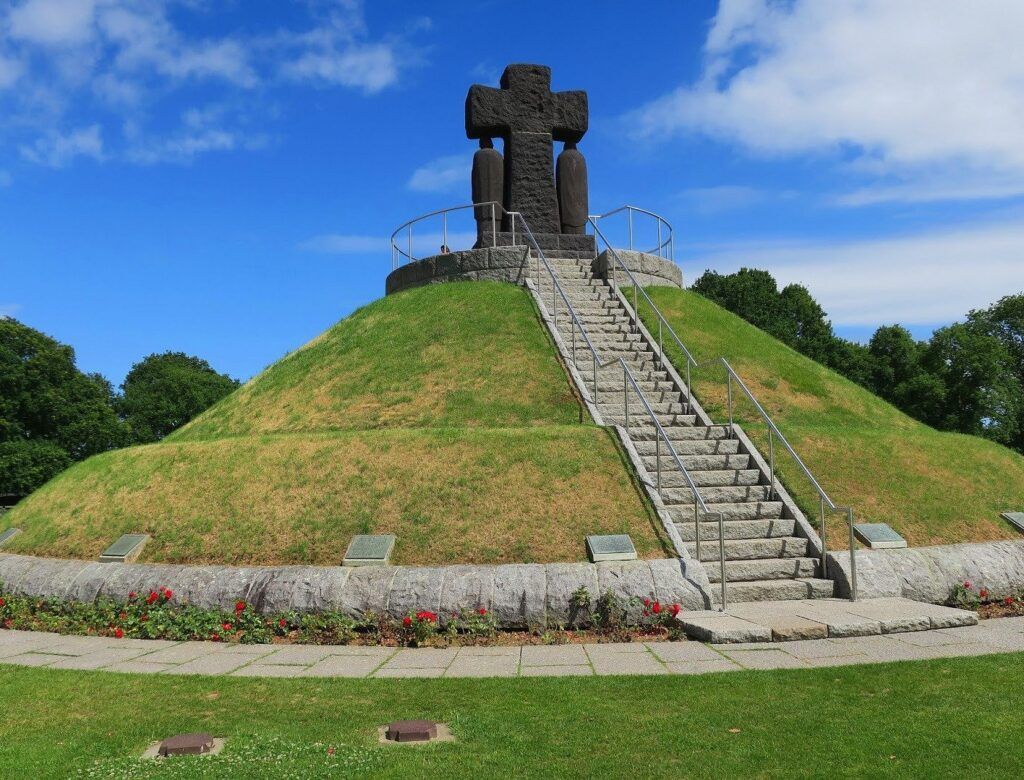
La Cambe, a small town in Normandy, was liberated on June 8, 1944 by the 175th Infantry Regiment of the 29th Infantry Division. The regiment was commanded by Colonel Paul R. Goode during this operation, which took place two days after the initial D-Day landings.
Today, La Cambe is most known for housing the largest German war cemetery in Normandy. This solemn site contains the remains of over 21,200 German military personnel who died during the Battle of Normandy.
The cemetery presents a stark contrast to the American cemeteries in the region. Marked by dark stone crosses and a central mound with a large cross, it offers visitors a different perspective on the human cost of war.
Initially, both American and German war dead were buried at this location. Later, the remains of American soldiers were moved to dedicated American cemeteries or repatriated to the United States.
A liberation monument in La Cambe commemorates the town’s freedom from Nazi occupation. As a symbol of the enduring alliance that emerged after the war, both American and French flags are displayed at this memorial.
For visitors touring D-Day sites with limited time, La Cambe provides an important historical counterpoint. It helps complete the narrative of the Normandy campaign by acknowledging the losses on all sides of the conflict.
Click here to read more about La Cambe.
Courseulles-sur-Mer
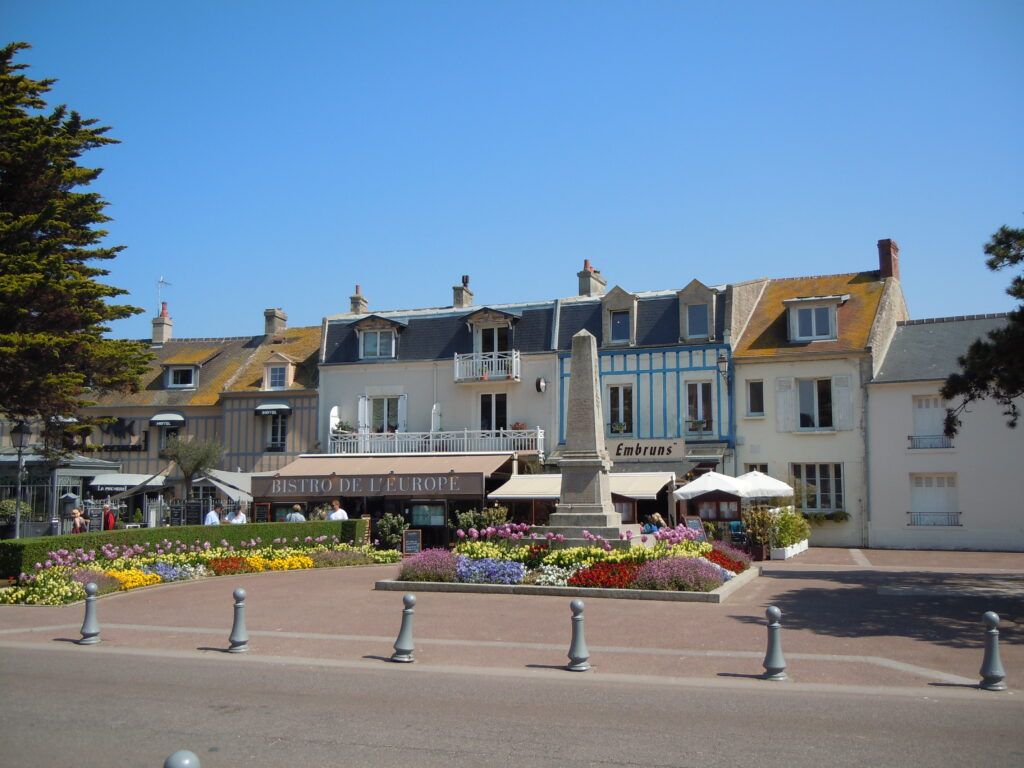
Courseulles-sur-Mer is a coastal commune in Normandy, northwestern France. Until 1957, it was simply known as Courseulles. The town sits on the English Channel at the mouth of the Seulles River.
During World War II, Courseulles-sur-Mer became a significant location in the Allied invasion of Normandy. The Germans had fortified the village with an anti-tank wall and established strong defensive positions coded as Wn 29 and Wn 30.
On June 6, 1944 (D-Day), Courseulles-sur-Mer was part of Juno Beach, one of the five landing zones for Allied forces. Canadian troops were assigned to this sector and faced fierce resistance as they came ashore.
Today, the town honors its wartime history through several memorials. The Juno Beach Centre stands as the only museum entirely funded by veterans and their charities. This important institution commemorates Canada’s unique contribution to the liberation of Europe.
Visitors to Courseulles-sur-Mer can explore both the beach area with its D-Day memorials and the inland region. The town has developed into a popular resort destination and marina while preserving its historical significance.
The juxtaposition of Courseulles-sur-Mer’s peaceful present and violent past makes it a compelling stop for those interested in World War II history. Memorial crosses dot the landscape, serving as somber reminders of the sacrifices made during Operation Overlord.
Click here to read more about Courseulles-sur-Mer.
Bénouville
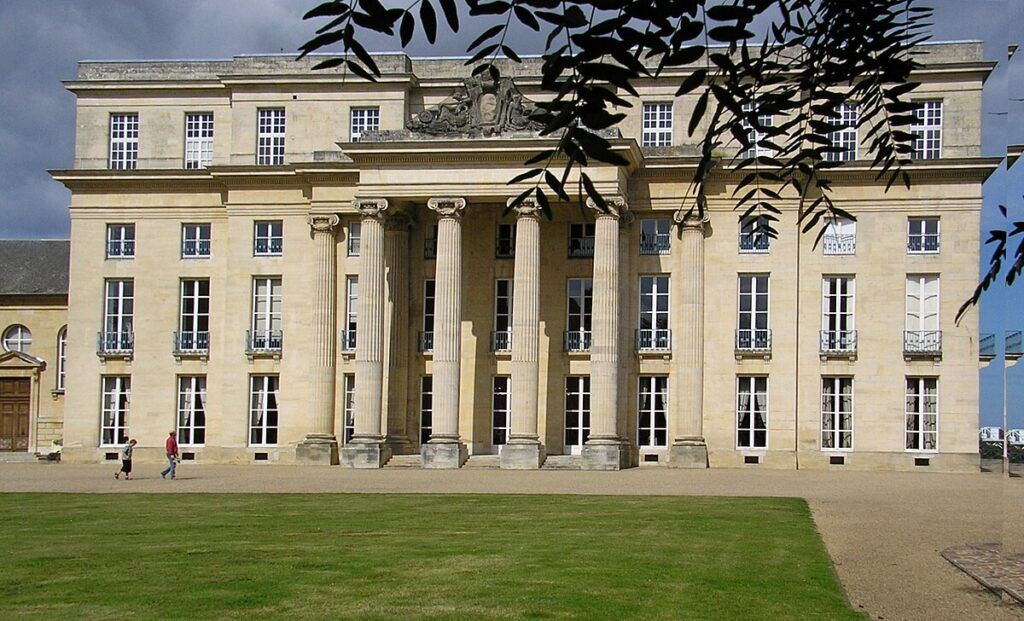
Bénouville holds special significance in D-Day history as the site of the famous Pegasus Bridge. This small Norman town became the stage for one of the most daring and successful operations of the Allied invasion.
In the early hours of June 6, 1944, British paratroopers of the 5th Parachute Brigade captured the strategic bridge over the Caen Canal. This remarkable feat was accomplished with precision and surprise, becoming one of the first successful actions on D-Day.
The bridge, later renamed “Pegasus Bridge” after the flying horse emblem of the British airborne forces, was vital to the Allied strategy. Controlling this crossing prevented German reinforcements from reaching the beaches and secured an escape route for troops landing at Sword Beach.
The original Pegasus Bridge has been replaced, but the historic bridge is preserved at a nearby museum. Visitors can still see bullet marks and damage from the battle.
Bénouville also features an elegant 18th-century Neoclassical château designed by Claude-Nicolas Ledoux. This architectural gem stands in stark contrast to the town’s wartime history.
After capturing the bridges at Bénouville and nearby Ranville, British troops established a rallying point before securing the west bank of the Canal de Caen. This strategic position helped ensure the success of subsequent landing operations.
Click here to read more about Bénouville.
Ranville
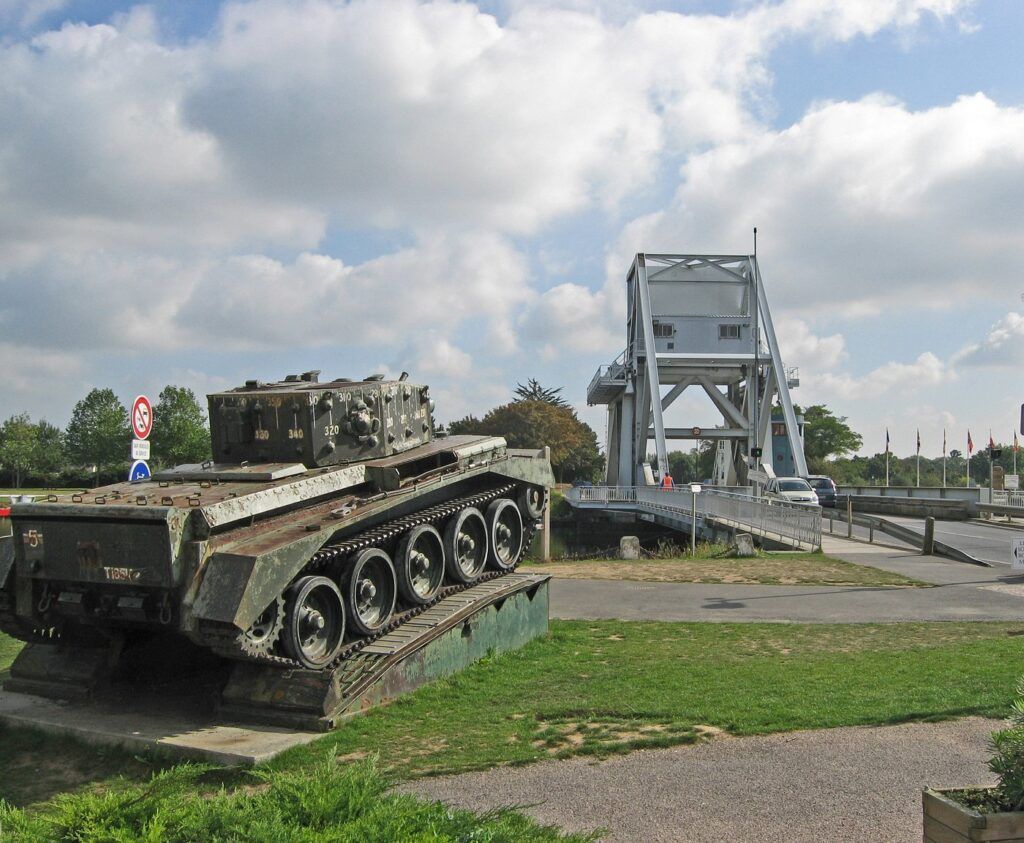
Ranville is the first French village liberated on D-Day, June 6, 1944. This historic Normandy village was at the heart of British airborne operations during the Allied invasion.
British forces, specifically the 13th Parachute Battalion commanded by Lieutenant-Colonel Peter Luard, secured Ranville in the early hours of D-Day. Paratroopers surrounded the small town around 2:30 AM, making it a crucial first victory in the liberation of France.
The village is located southwest of drop zone “N,” which was designated for the regiments of the 5th Para Brigade. Its strategic importance cannot be overstated in the overall D-Day operation.
Ranville’s fame is closely tied to the nearby Pegasus Bridge. The daring capture of this bridge over the Caen Canal was a vital objective that helped secure the eastern flank of the invasion area.
Visitors to Ranville today can explore several historic sites:
- Pegasus Memorial – commemorating the bridge capture
- War Cemetery – final resting place for many Allied soldiers
- Château de Guernon – a 19th-century historic building in the area
The village remains a powerful symbol of liberation and the beginning of the end for Nazi occupation in France. Its place in history was secured in those early hours of D-Day when it became the first piece of French soil reclaimed by Allied forces.
Click here to read more about Ranville.
Saint-Laurent-sur-Mer
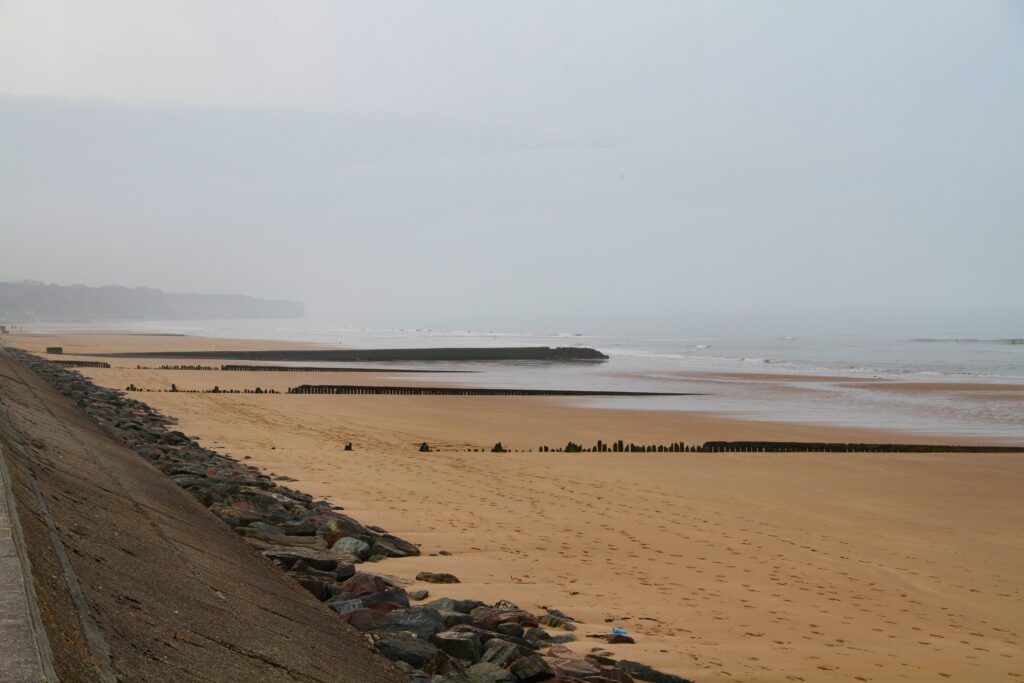
Saint-Laurent-sur-Mer is a small coastal village in Normandy that gained historical significance during World War II. It sits directly on Omaha Beach, one of the most notorious D-Day landing sites during the Allied invasion on June 6, 1944.
The beach area was heavily fortified by German forces with six strongpoints coded from Wn 64 to Wn 69. These defenses made the American landing at Omaha Beach particularly deadly and difficult.
Today, visitors can explore several important historical sites in this village. The Omaha Beach Memorial Museum provides detailed exhibits about the landings and subsequent battle. The beach itself serves as a living monument to the sacrifice of Allied soldiers.
The Maison de la Libération offers a heritage site honoring World War II combatants, including the French Resistance, Allied forces, and civilians who experienced the conflict in the Omaha Beach sector.
Perhaps the most moving site near Saint-Laurent-sur-Mer is the American Military Cemetery, where approximately 5,000 soldiers who gave their lives for liberty are laid to rest. The pristine rows of white crosses and Stars of David create a powerful visual reminder of the cost of freedom.
The beach also features Les Braves, a striking memorial sculpture that stands on the sand where American troops landed. This artistic monument commemorates the courage of soldiers who faced overwhelming odds.
While Utah Beach lies to the west of Saint-Laurent-sur-Mer, Omaha Beach remains the focal point of this small village’s historical identity.
Click here to read more about Saint-Laurent-sur-Mer.
Mortain
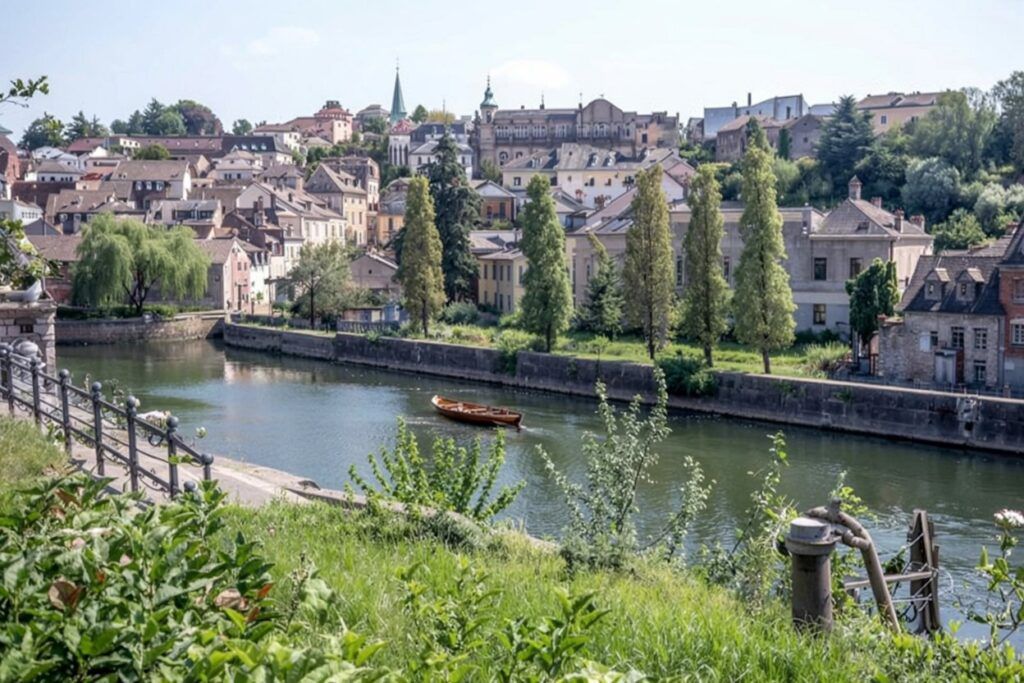
Mortain is a historic town in the Manche department of Normandy, France. It played a significant role during the Battle of Normandy following the D-Day landings in 1944.
The town itself is situated in northwestern France and became part of a new, larger commune on January 1, 2016. Mortain’s strategic position made it crucial during the Allied push inland after the Normandy invasion.
On August 1, 1944, the 1st Infantry Division led by Major General Clarence R. Huebner was ordered to capture Mortain. This was part of the broader Allied strategy to continue their advance through Normandy.
Hill 314 (sometimes referred to as Hill 317) near Mortain was a site of intense fighting. The hill was gallantly defended by Allied forces against German counterattacks. Today, visitors can walk around various locations on the hill to learn about this crucial defense.
Unlike some other Normandy towns, Mortain had to wait several weeks for liberation after D-Day. While Cherbourg was liberated on June 26, Caen on July 9, Saint-Lô on July 18, and Paris on August 25, Mortain’s liberation came as part of the August operations.
For those interested in World War II history, Mortain is considered well worth a visit. The town preserves important historical sites related to the Battle of Normandy and continues to honor its wartime heritage.
Click here to read more about Mortain.
Falaise
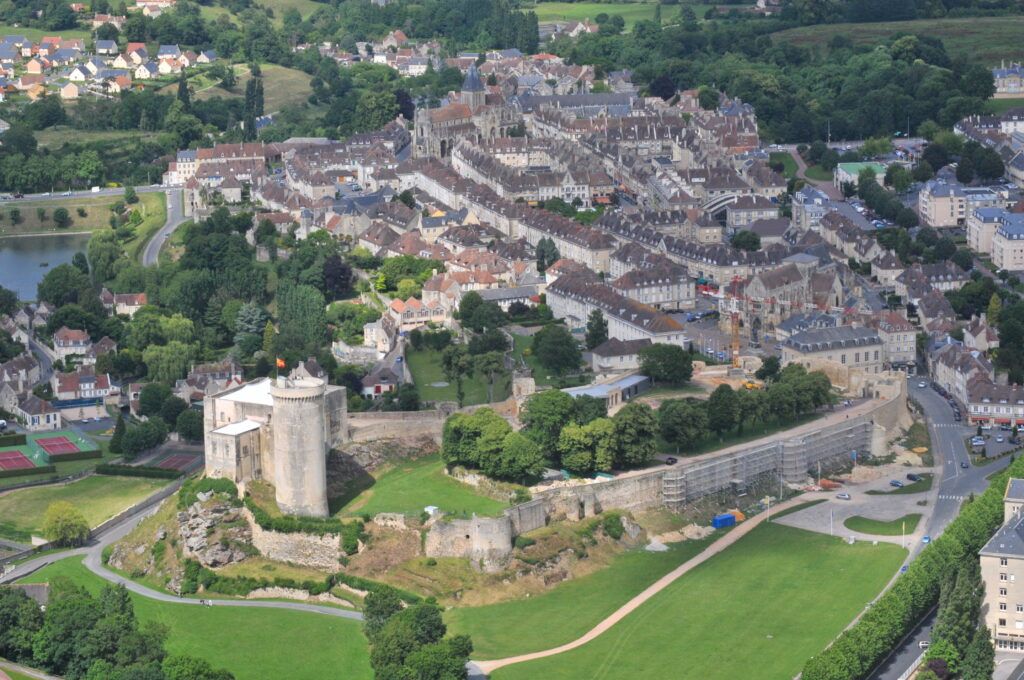
Falaise is a charming medieval town in Normandy with deep historical significance. Built on a rocky outcrop between two rivers that provided natural protection, this town boasts a rich heritage dating back to the Middle Ages.
Falaise gained fame as the birthplace of William the Conqueror, the first Norman king of England. The impressive medieval castle that dominates the town’s landscape stands as a testament to its historical importance and economic prosperity through the centuries.
During World War II, Falaise became known for the “Falaise Pocket,” a critical battle in the 1944 Normandy Campaign. This battle marked a decisive moment when Allied forces encircled and defeated German troops trying to escape Normandy after D-Day.
The military operation in the Falaise area resulted in one of the war’s most significant tactical victories. German forces suffered massive casualties and equipment losses as they attempted to retreat through an increasingly narrow corridor.
Today, visitors to Falaise can explore both its medieval heritage and World War II history. The town offers a unique glimpse into Normandy’s past, from William the Conqueror’s legacy to the pivotal battles that helped liberate France during WWII.
Falaise’s location on the edge of the picturesque Suisse Normande region makes it an ideal base for travelers interested in both historical sites and natural beauty.
Click here to read more about Falaise.
Bernières-sur-Mer
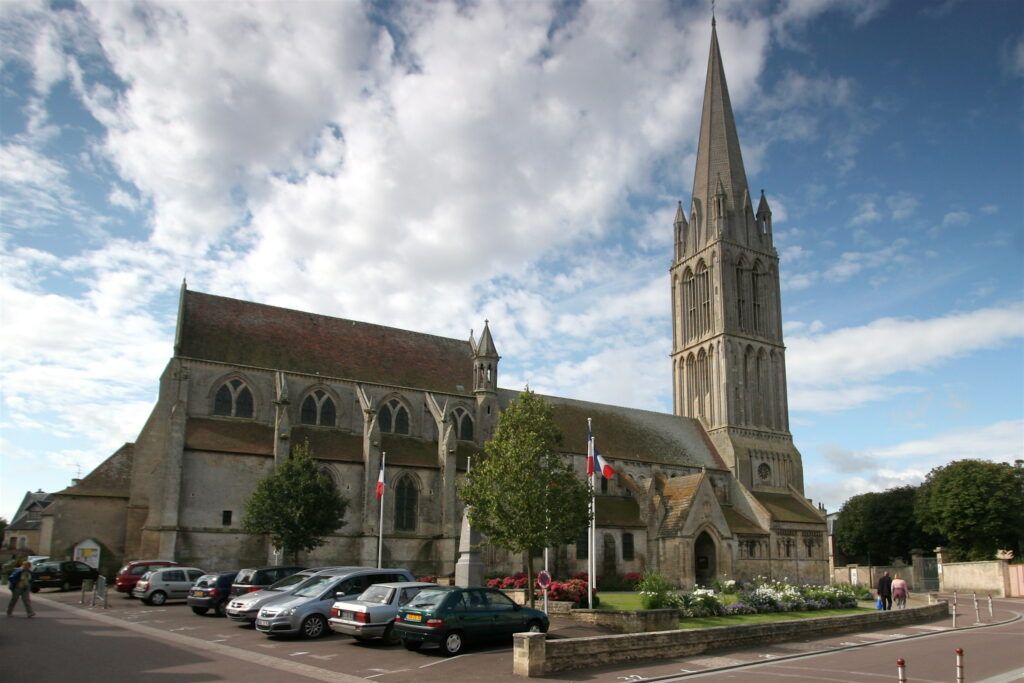
Bernières-sur-Mer stands as one of the oldest settlements on Normandy’s Côte de Nacre, with scattered Gallo-Roman artifacts confirming its ancient heritage. This small coastal town gained historical significance during World War II’s D-Day landings on June 6, 1944.
On D-Day, Bernières-sur-Mer was part of Juno Beach, the designated landing site for Canadian forces. German defenses included a substantial anti-tank wall and a strongpoint coded Wn 28, manned by soldiers from the 5th company.
Canadian troops faced these fortifications as they came ashore. The Queen’s Own Rifles of Canada and other units secured the town after overcoming initial resistance. Bernières-sur-Mer became one of the first French towns liberated during Operation Overlord.
Today, visitors can walk the same beaches where Canadian veterans like Ken Scott once fought. Forty years after the invasion, Scott returned to stand on the beach facing the town, his memories of that fateful day still vivid.
The town serves as an important memorial site along Juno Beach, which stretched from Bernières-sur-Mer to Courseulles-sur-Mer. Historical markers and preserved war structures help visitors understand the town’s crucial role in the Allied invasion.
Bernières-sur-Mer’s distinctive architecture and coastal charm continue to attract visitors interested in both its ancient past and its pivotal place in modern history.
Click here to read more about Bernières-sur-Mer.
Pont-l’Évêque
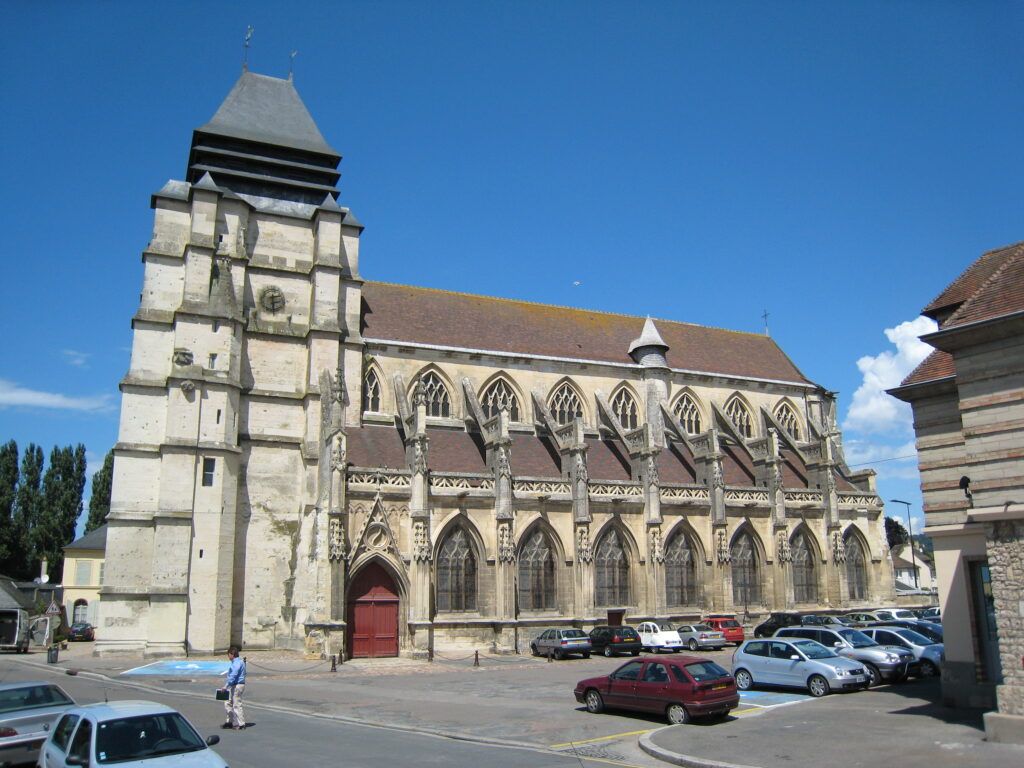
Pont-l’Évêque is a traditional French town nestled in the Calvados department of Normandy. This charming commune offers visitors a glimpse into authentic Norman culture while serving as a strategic intersection for travelers exploring the region.
The town is widely recognized for its namesake Pont-l’Évêque cheese, a soft variety that represents one of Normandy’s culinary treasures. This gastronomic heritage attracts food enthusiasts from around the world.
Visitors to Pont-l’Évêque can admire the well-preserved architecture throughout the town. Many buildings date from the 16th and 18th centuries, showcasing typical Norman construction styles that survived the conflicts of the 20th century.
The town’s history includes a 19th-century prison, now a historical landmark that tells part of the area’s complex past. These preserved structures provide insight into life before and after the momentous events of D-Day.
While not directly on the D-Day landing beaches, Pont-l’Évêque serves as a gateway to important WWII sites. Major roads connect it to Caen, Lisieux, Rouen, and Deauville, making it an excellent base for exploring Normandy’s historic locations.
Popular activities in the area include:
- Visiting Calvados Père Magloire L’Experience
- Touring Calvados Christian Drouin
- Joining guided city and cultural tours
- Exploring regional architecture
The town welcomes travelers with its warm hospitality and serves as a reminder of the peaceful Normandy that Allied forces fought to liberate during World War II.
Click here to read more about Pont-l’Évêque.
La Roche-Guyon
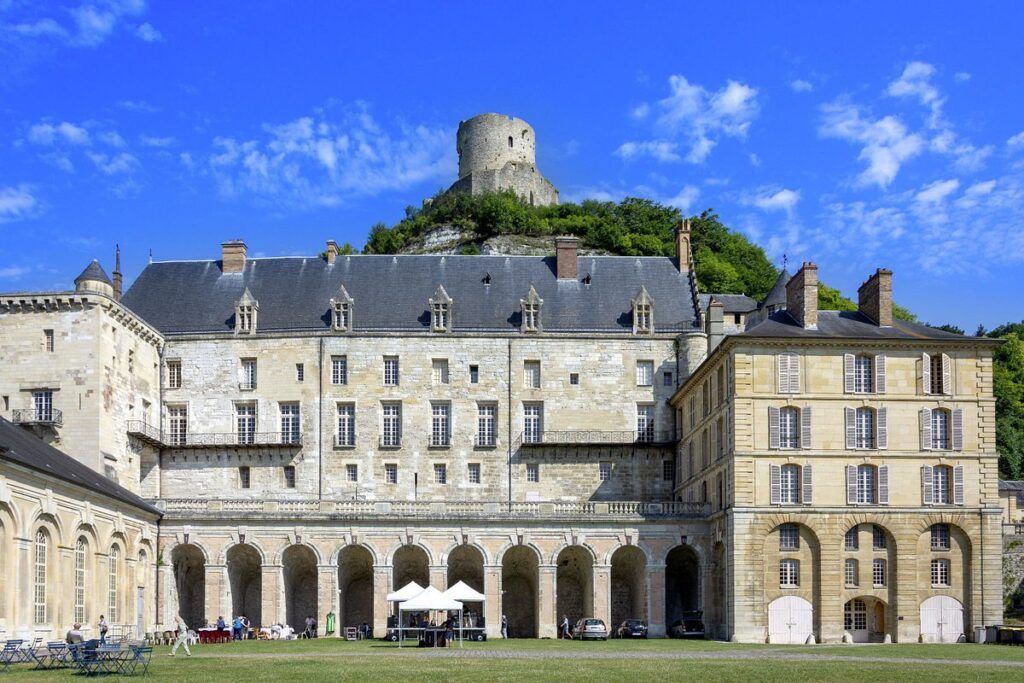
La Roche-Guyon is a small commune nestled in the Val-d’Oise department in northern France’s Île-de-France region. This picturesque village, located within the Vexin regional nature park, has a population of only about 500 residents.
The town is primarily known for its 12th-century château that sits dramatically against a chalk cliff overlooking the Seine River. During World War II, this historic castle gained strategic importance as it became Field Marshal Erwin Rommel’s headquarters.
Rommel, who commanded German forces defending the Atlantic Wall, chose La Roche-Guyon due to its proximity to the Normandy coast yet close enough to Paris for communication purposes. From this location, he organized the German defensive strategy against the anticipated Allied invasion.
The château’s thick walls and underground tunnels provided natural protection against potential air raids, making it an ideal military command center. Today, visitors can tour the rooms where Rommel and his staff planned their defensive operations against the D-Day landings.
The village itself experienced German occupation, with its 67 citizens living alongside the military presence. Despite its small size, La Roche-Guyon represents an important historical link in understanding the German defensive preparations before D-Day.
For those exploring Normandy’s D-Day sites, La Roche-Guyon offers a unique perspective on the war from the German command’s viewpoint. It can be reached by taking road D5 when traveling from other Normandy locations.
Click here to read more about La Roche-Guyon.
Avranches
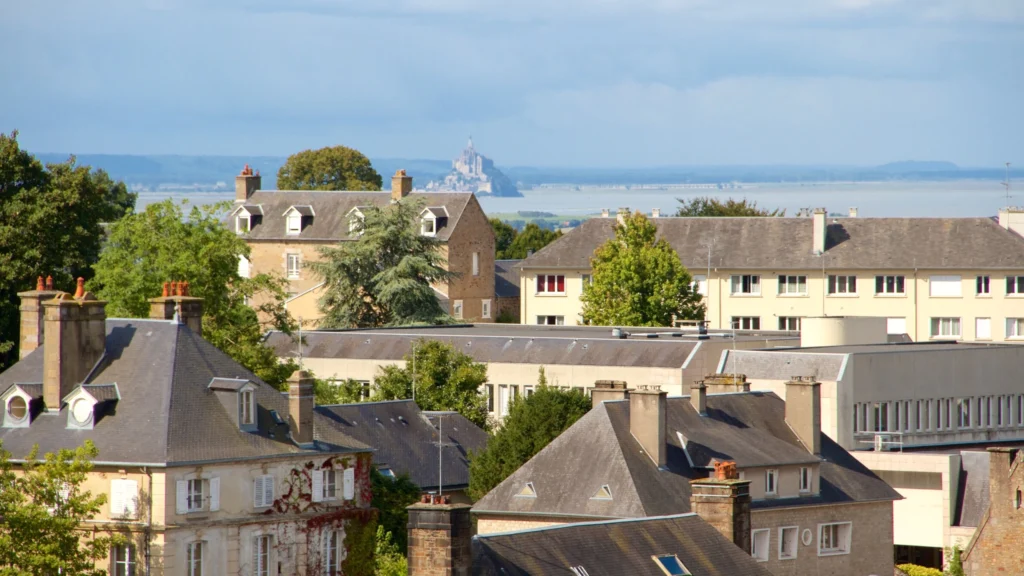
Avranches is a charming commune located in the Manche department of Normandy, northwestern France. This small town sits in the southern part of La Manche region and serves as a subprefecture of the department.
During the Normandy Campaign of 1944, Avranches played a crucial role in the Allied advance. The town suffered violent bombings beginning on June 7, 1944, just one day after D-Day. These bombings were strategic efforts by Allied forces to slow down German reinforcements heading toward the landing beaches.
Unlike towns closer to the initial landing zones, Avranches had to wait longer for its liberation. Places like Cherbourg were freed on June 26 and Caen on July 9, while Avranches remained under occupation until later in the campaign.
Today, Avranches is known for its rich World War II history, with several D-Day and Battle of Normandy sites, museums, and monuments. Visitors can explore these historical landmarks to better understand the town’s significance during this pivotal time.
Beyond its wartime history, Avranches charms visitors with its cobbled lanes, ancient ramparts, and picturesque squares. The Jardin des Plantes stands out as a particularly beautiful spot worth visiting for those exploring the town.
For those interested in D-Day history, Avranches serves as an excellent base for exploring nearby battle sites and memorials throughout the southern Normandy region.
Click here to read more about Avranches.
Montebourg
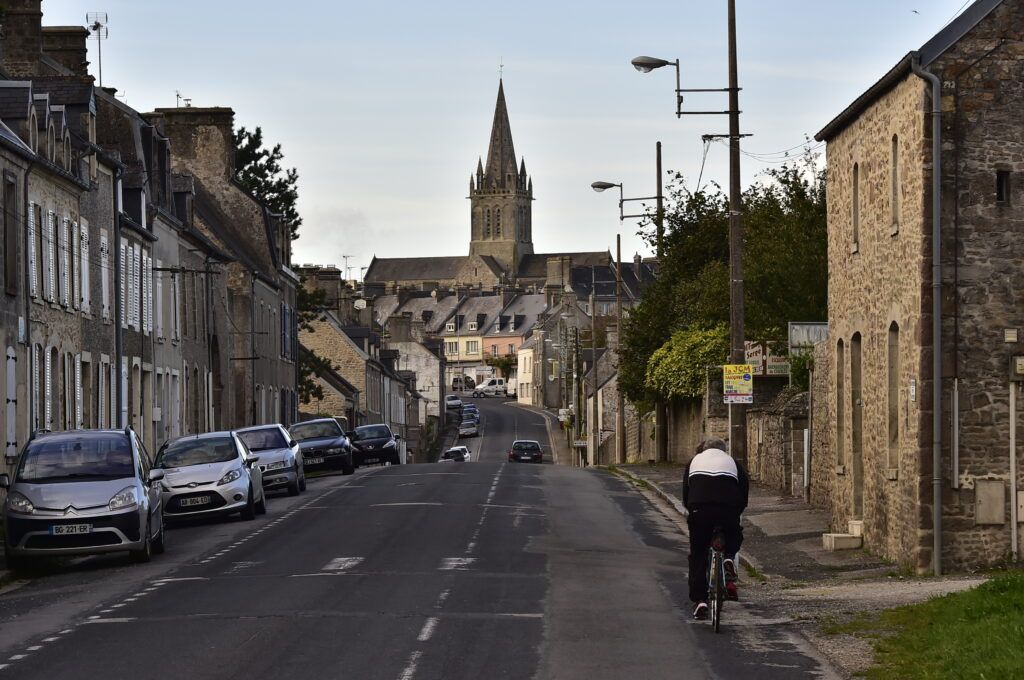
Montebourg, a small town in Normandy, played a significant role in the Allied campaign following the D-Day landings of June 1944. Located on the Cotentin Peninsula, this strategic settlement became an important objective for American forces pushing inland from the beaches.
As early as June 7, 1944 – just one day after the initial landings – American troops stationed at Sainte-Mère-Église received orders to advance toward Montebourg along National Road 13. The town’s strategic importance is evident from the existence of top-secret maps prepared specifically for this operation just weeks before D-Day.
The battle for Montebourg was fierce. American forces faced determined German resistance as they fought to secure this vital location. On June 11, 1944, Allied troops finally liberated the town, though at a tremendous cost.
The fighting left Montebourg in ruins – a town that would need to be rebuilt “from blood and ash” as described by military leaders. This destruction reflects the intensity of combat that characterized the broader Normandy campaign.
Today, Montebourg stands as a testament to resilience and remembrance. The town has not forgotten its legacy, maintaining important connections to its wartime past. During D-Day anniversary commemorations, Montebourg regularly hosts events that highlight the sacrifices made during those pivotal days of June 1944.
Visitors to Montebourg can experience both the town’s rich history and its remarkable recovery from the devastation of war.
Click here to read more about Montebourg.
Isigny-sur-Mer
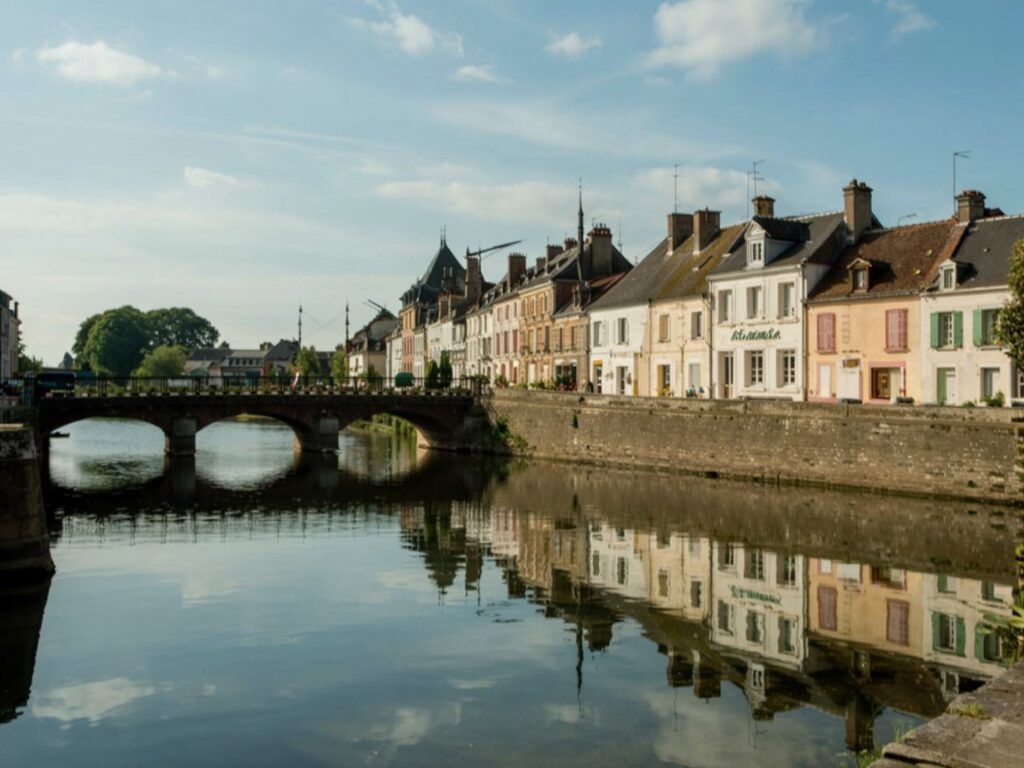
Isigny-sur-Mer is a small seaside town situated between D-Day Landing Beaches in Normandy. In spring 1944, the town was occupied by Ukrainian soldiers in German uniform, who were part of Ost-Battalion 439 of the 352nd Infantry Division.
During the Battle of Normandy, Isigny-sur-Mer suffered tremendous destruction. The town was one of the most heavily damaged in the region, essentially destroyed during the D-Day operations and subsequent fighting.
Unlike some of the more famous landing beaches, Isigny-sur-Mer sits somewhat inconspicuously along the Norman coast. Its strategic location, however, made it an important objective during the Allied invasion.
Following the devastation of war, Isigny-sur-Mer was completely rebuilt from the ashes. This reconstruction effort transformed the destroyed town into the charming coastal community visitors see today.
The town now serves as an important site for remembering the strong relationship between the United States and its European allies. Annual D-Day anniversary commemorations reinforce these historic bonds.
Visitors to Isigny-sur-Mer can join various tours exploring its D-Day history, including:
- Full-Day Private D-Day to Saint Lô Tour
- Normandy American D-Day Beaches Full Day Tour from Bayeux
These tours provide context about how this small town played a role in the larger Normandy invasion and subsequent battle for liberation.
Click here to read more about Isigny-sur-Mer.
Argentan
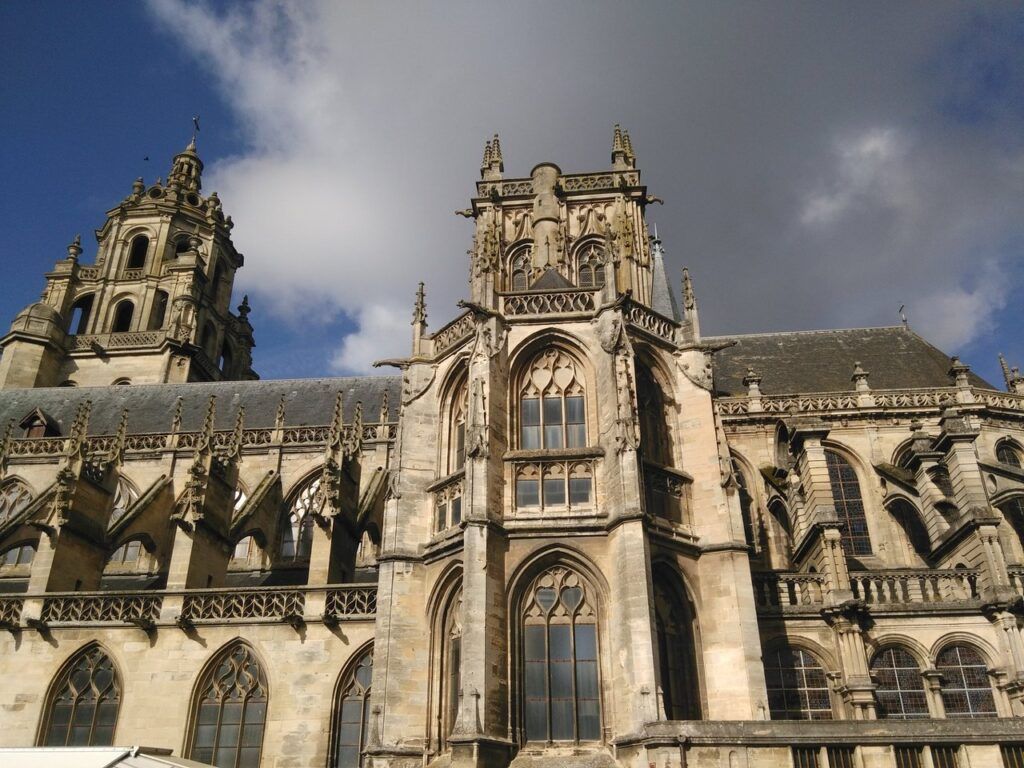
Argentan is a commune in northwestern France, located in the Orne department of Normandy. This small town sits peacefully along the Orne river and was once one of Normandy’s most important fortified towns.
During World War II, Argentan played a crucial role in the Battle of Normandy following the D-Day landings. The town became strategically significant in August 1944 during what became known as the Falaise Pocket operation.
General Haislip’s forces positioned themselves just kilometers south of Argentan as they advanced toward Falaise. This movement was part of the Allied strategy to trap approximately 110,000 German soldiers who were caught between the closing Allied forces.
Argentan’s geographic location made it a key point in this military maneuver. The town sits at a strategic crossroads, which today is served by excellent transportation links including the A88 and A28 highways.
Visitors to Argentan today can explore various historical sites related to the Liberation of Normandy. The town serves as an important stop for those touring D-Day historic sites beyond the more famous landing beaches.
The town now stands as the third largest in the Orne department and serves as the seat of two cantons and an arrondissement. Its peaceful present contrasts with its significant wartime past.
For history enthusiasts touring Normandy’s D-Day sites, Argentan offers a less crowded but historically significant location to understand the full scope of the Normandy campaign.
Click here to read more about Argentan.
Villers-Bocage
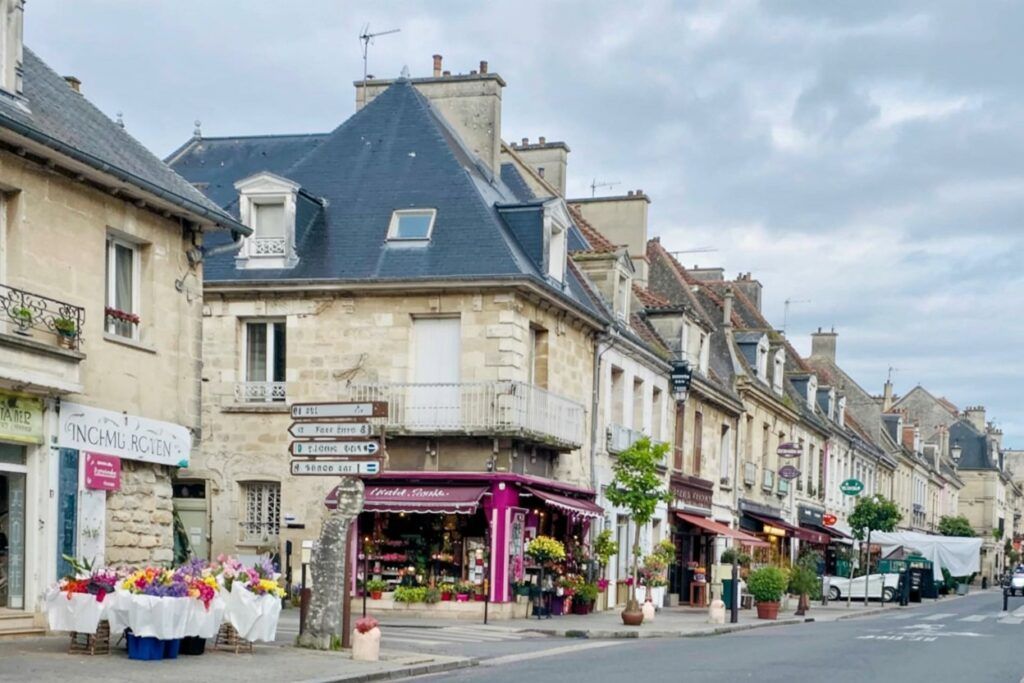
Villers-Bocage holds significant importance in the narrative of the Normandy campaign. One week after the D-Day landings, this small town became the site of a fierce battle between British and German forces.
The Battle of Villers-Bocage highlighted the challenges Allied forces faced as they pushed inland from the Normandy beaches. The British 22nd Armoured Brigade suffered heavy casualties during the engagement, with records indicating 217 men lost through death, injury, capture, or being reported missing.
German forces, including tanks commanded by Michael Wittmann, launched a surprise attack against British armored units. This battle demonstrated how a smaller force could effectively halt a larger advancing column in the confined spaces of a Norman town.
The battle had a substantial human cost. Reports indicate that approximately 213 British soldiers lost their lives during the fighting. Some accounts mention that five captured British soldiers died due to a tragic misunderstanding.
Today, Villers-Bocage serves as an important historical site for those studying the Battle of Normandy. Visitors can take specialized tours focused on the tank battle that occurred in and around the village. These tours help preserve the memory of those who fought and died during this significant engagement.
The town now stands as a testament to the intense fighting that occurred beyond the beaches as Allied forces pushed toward Paris and victory in Europe.
Click here to read more about Villers-Bocage.

